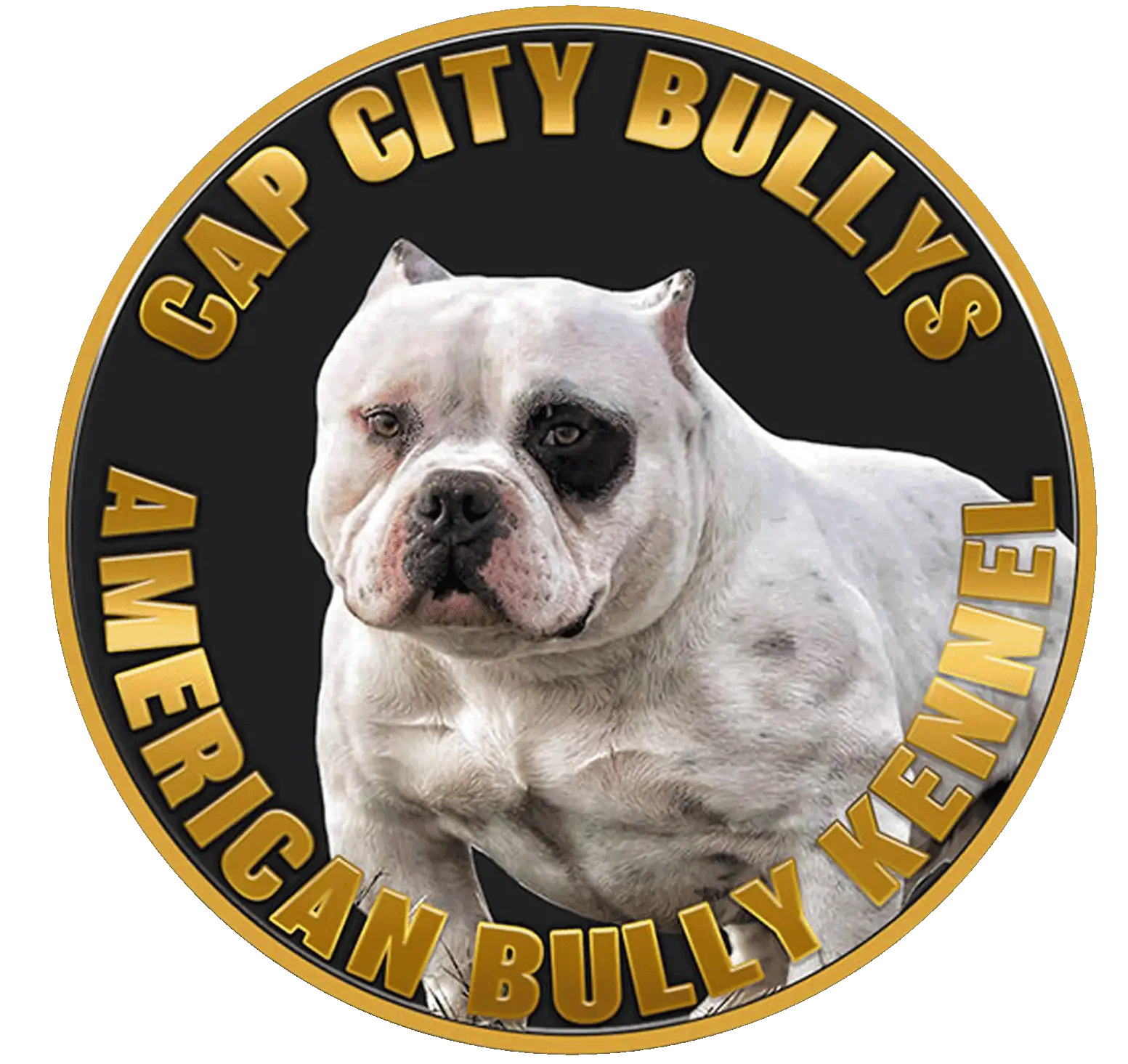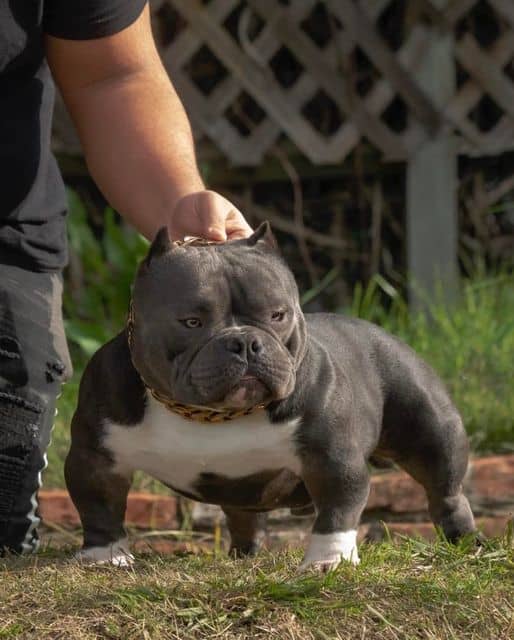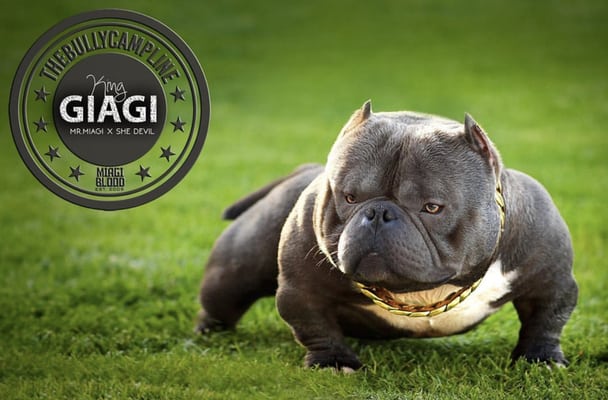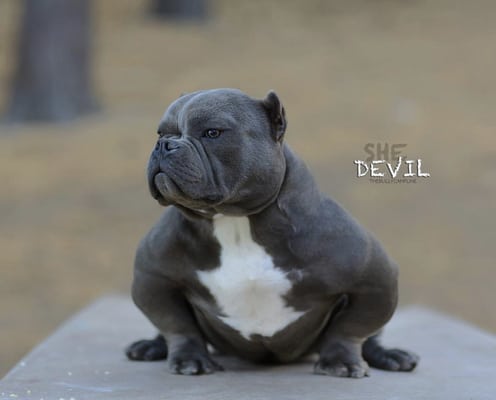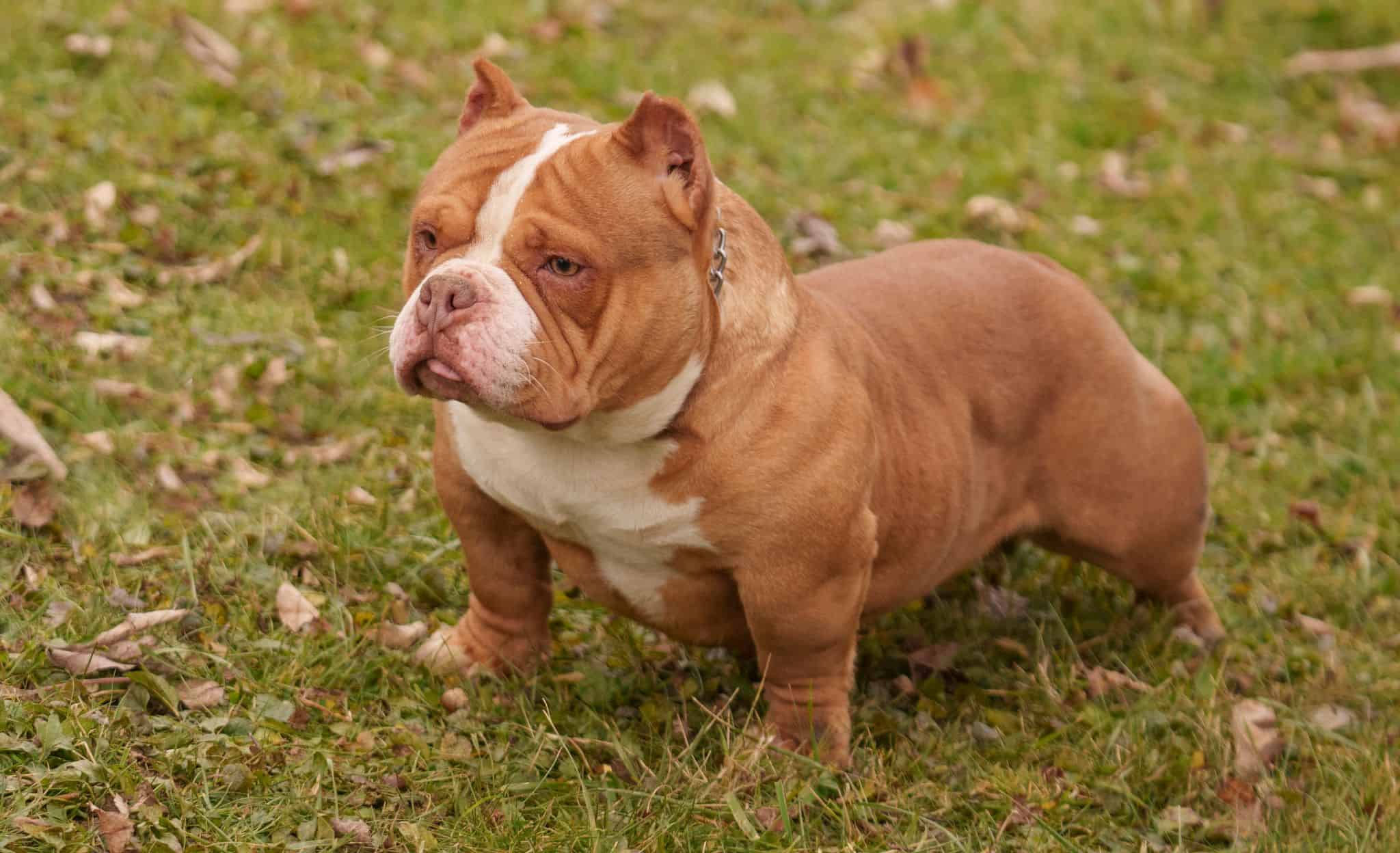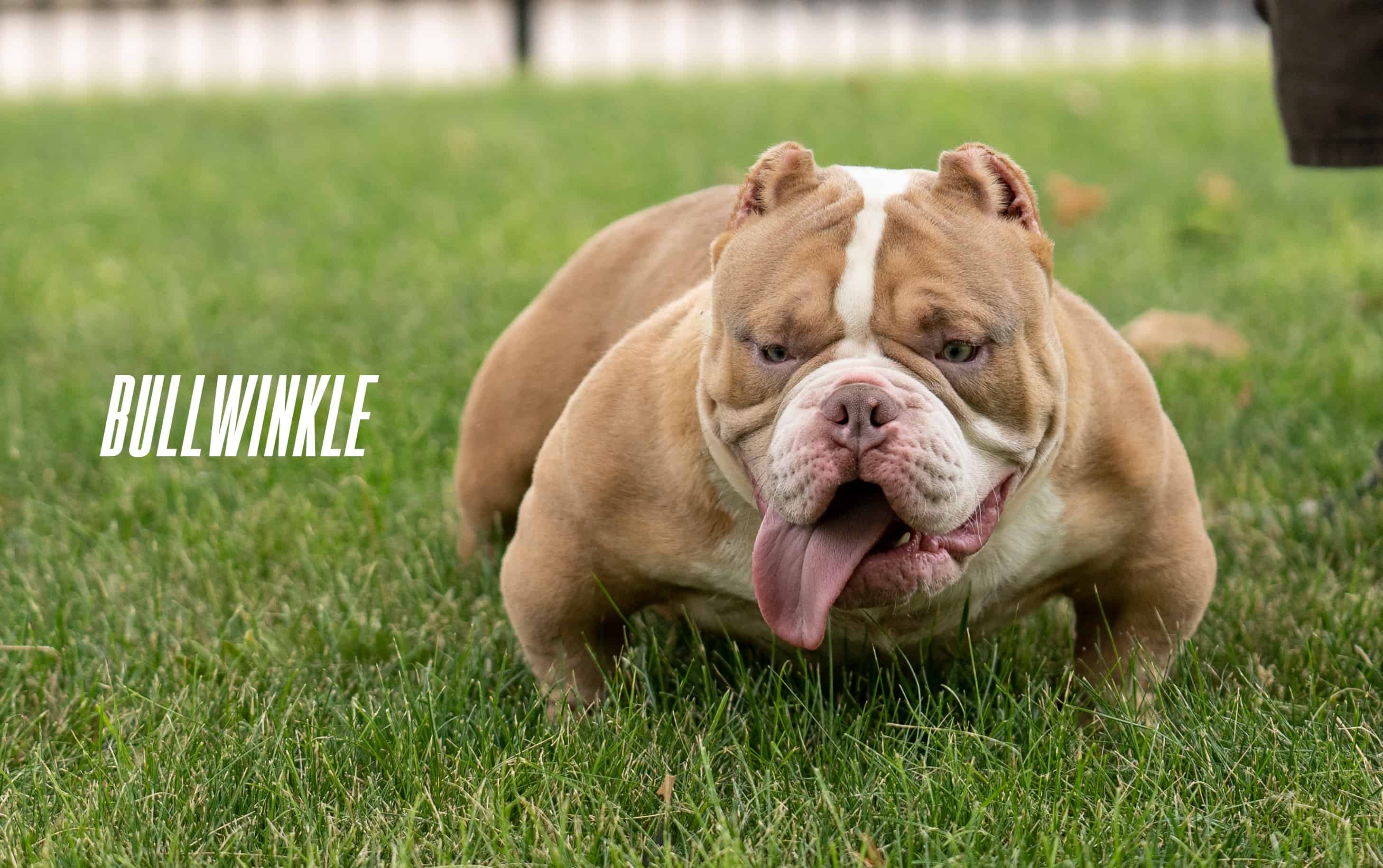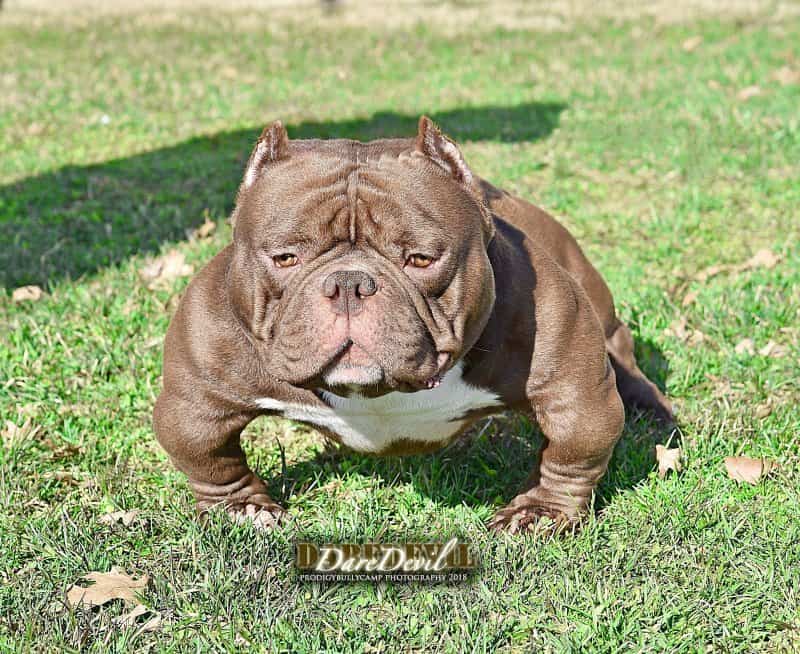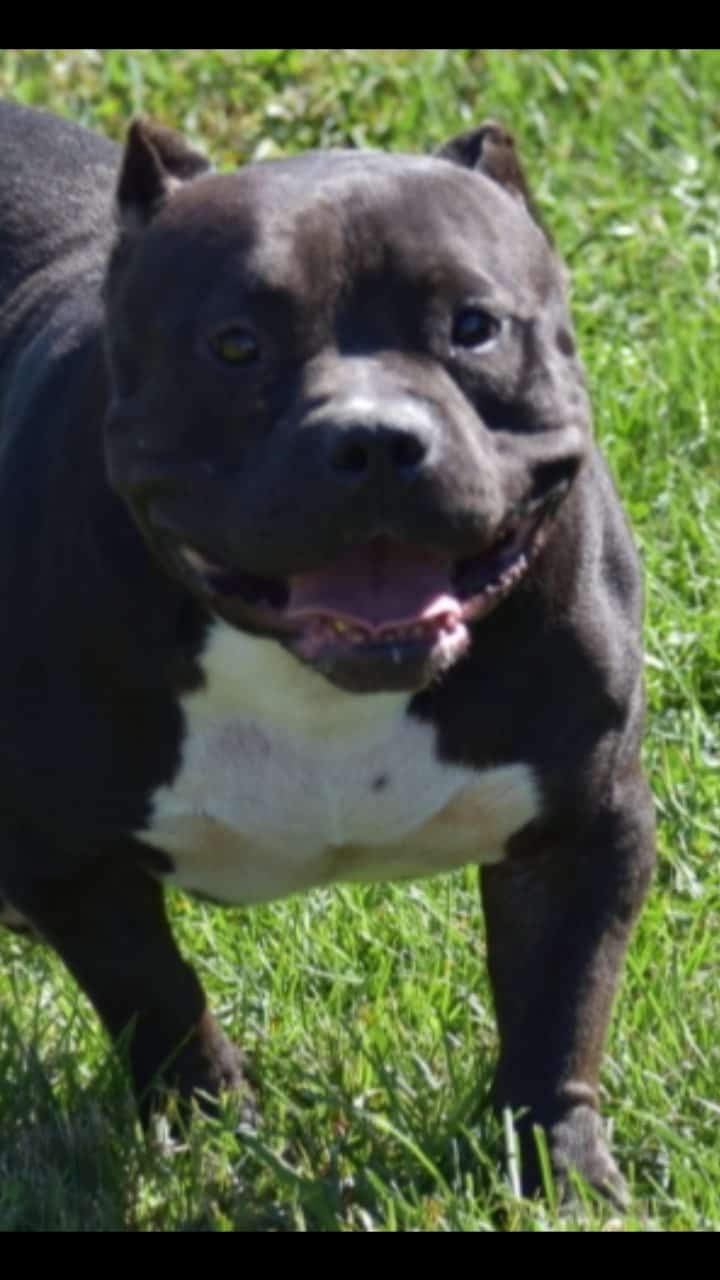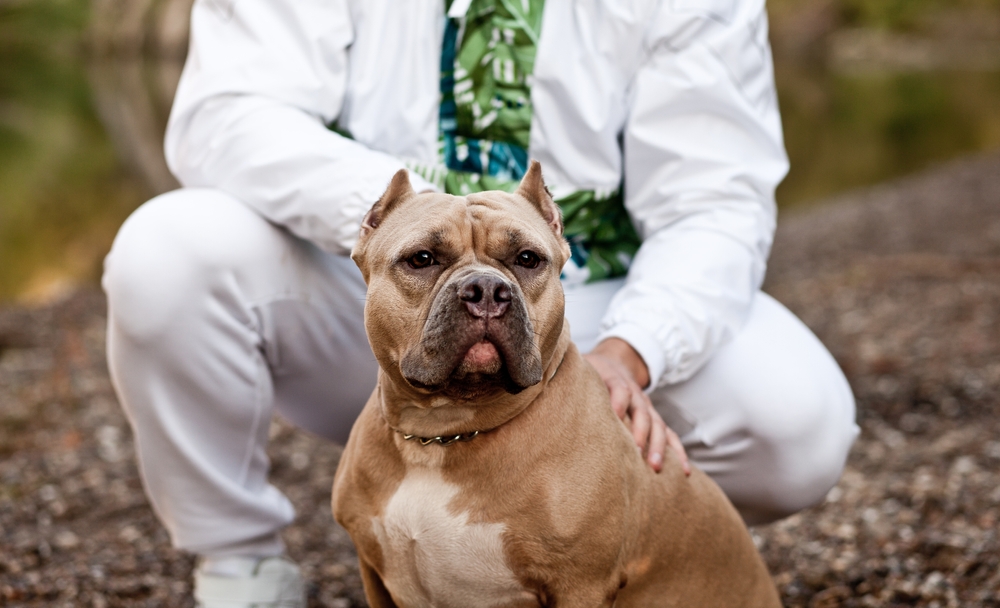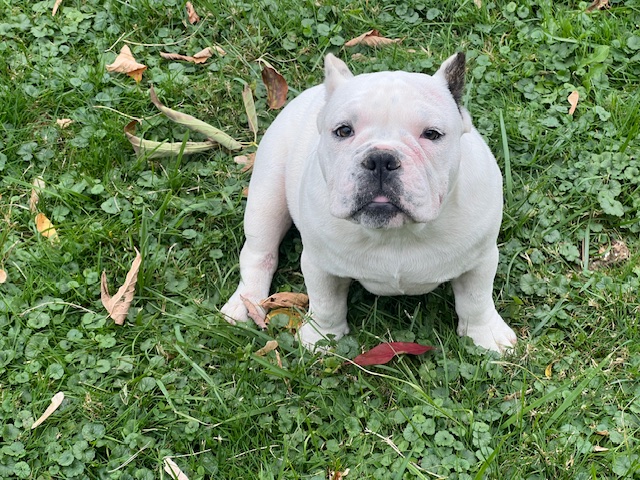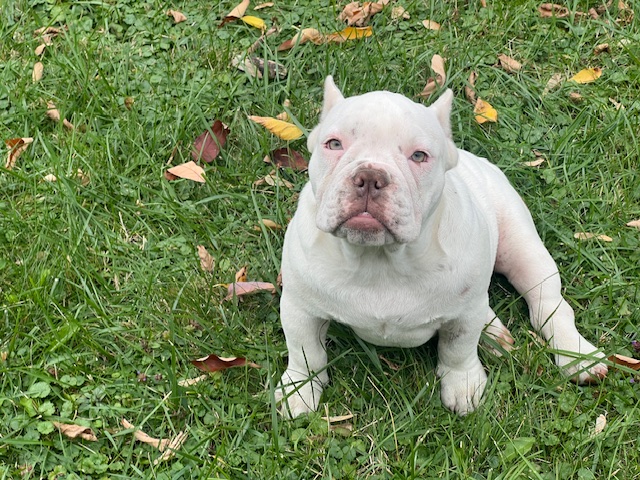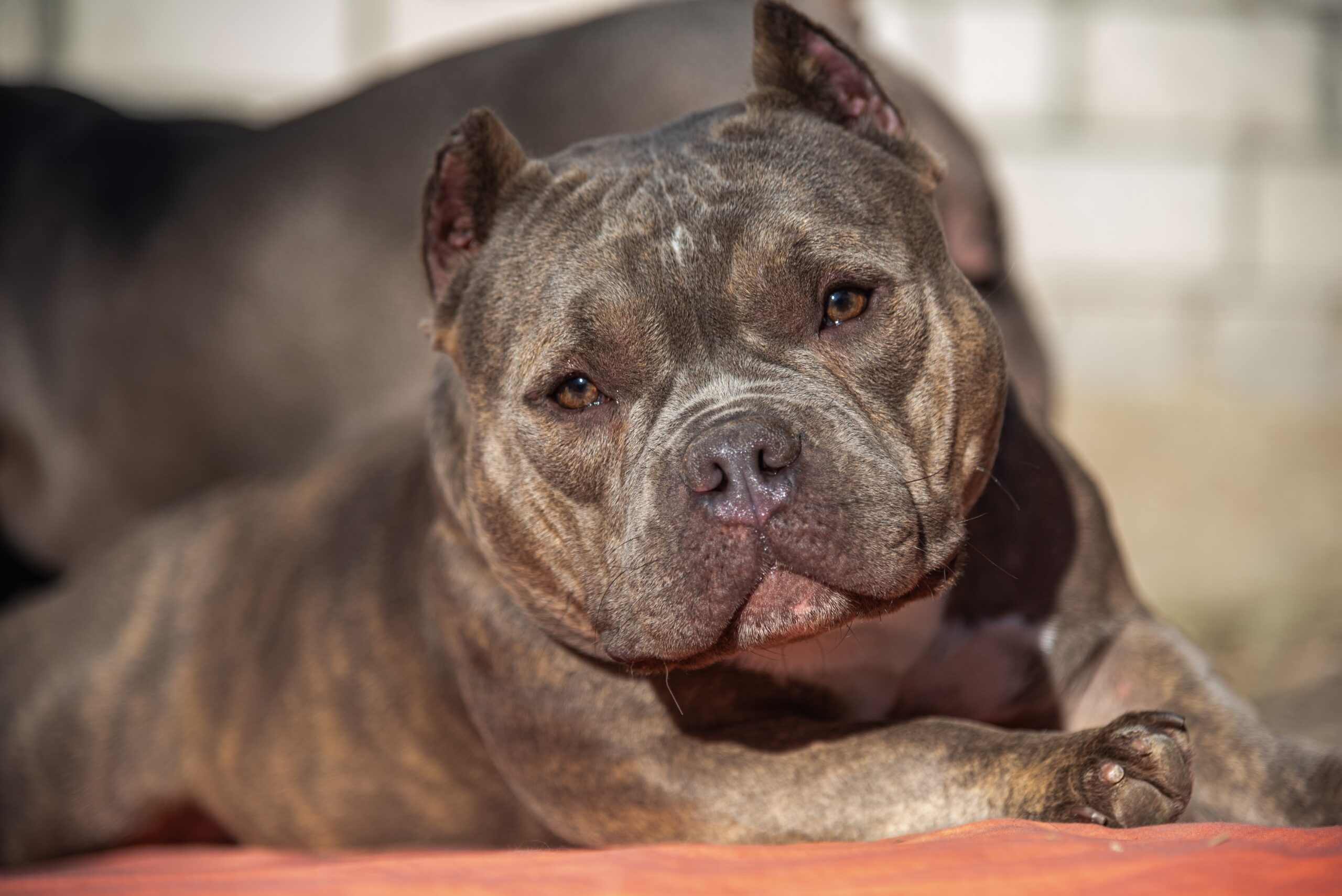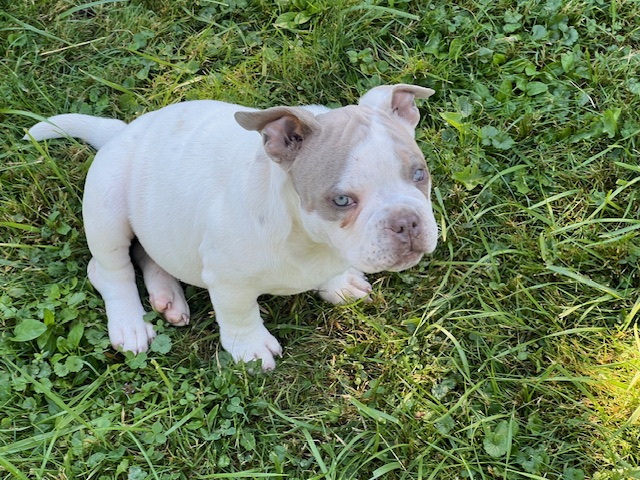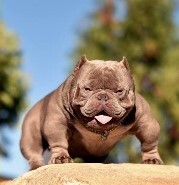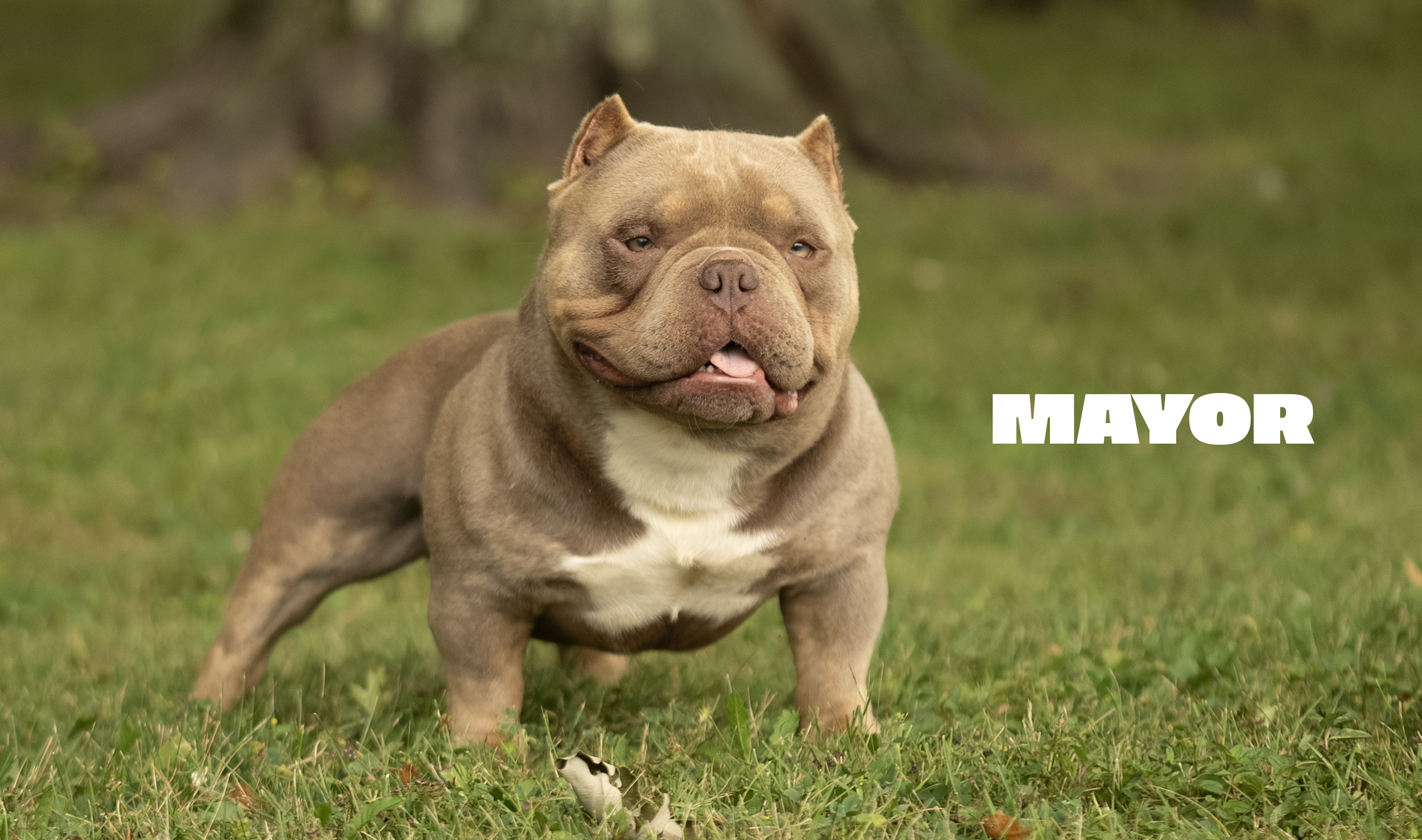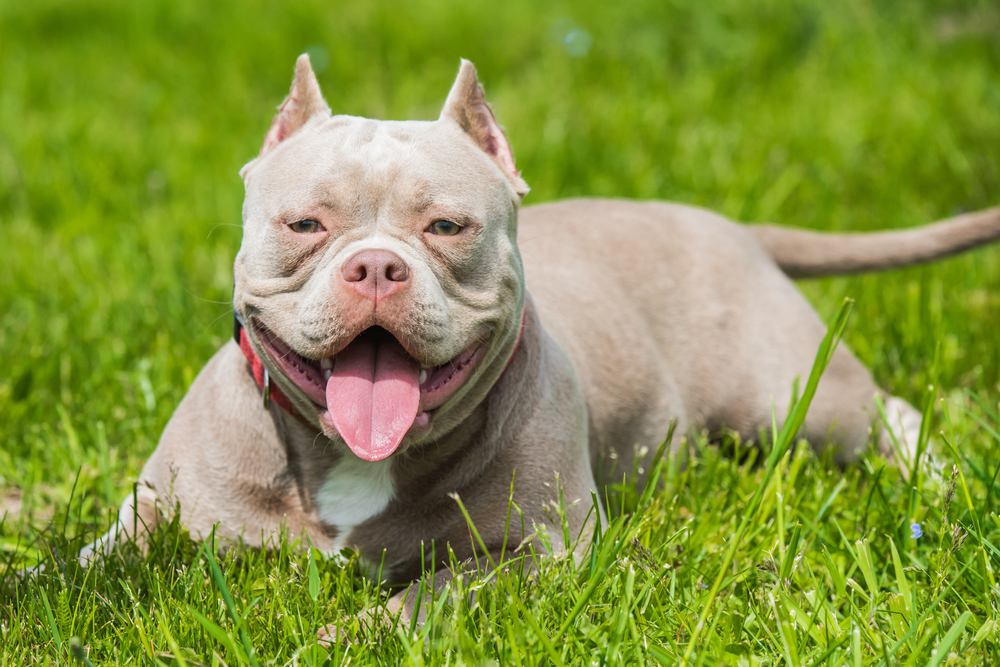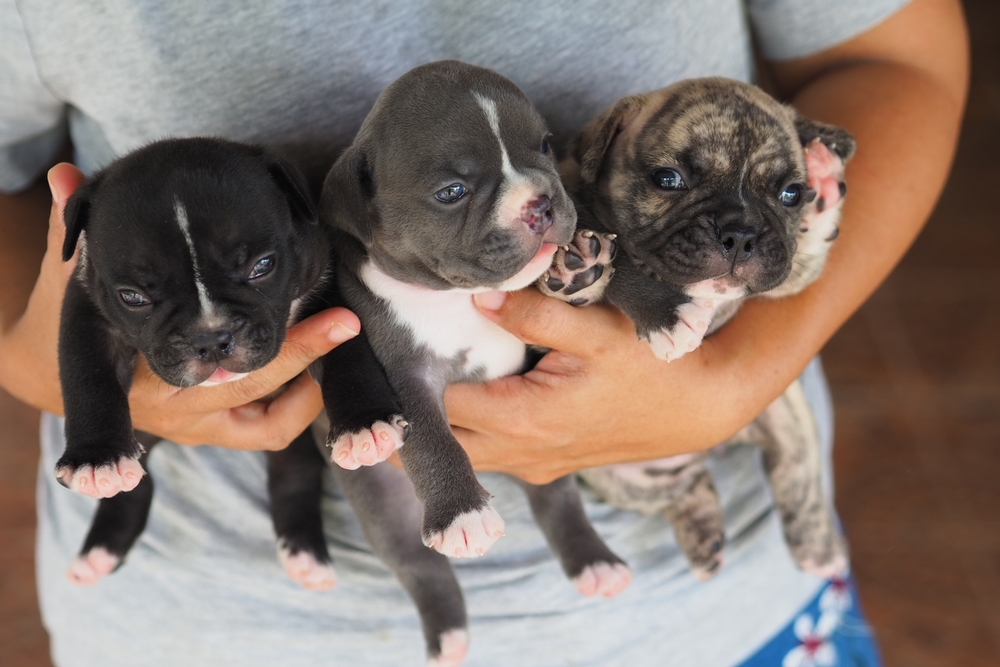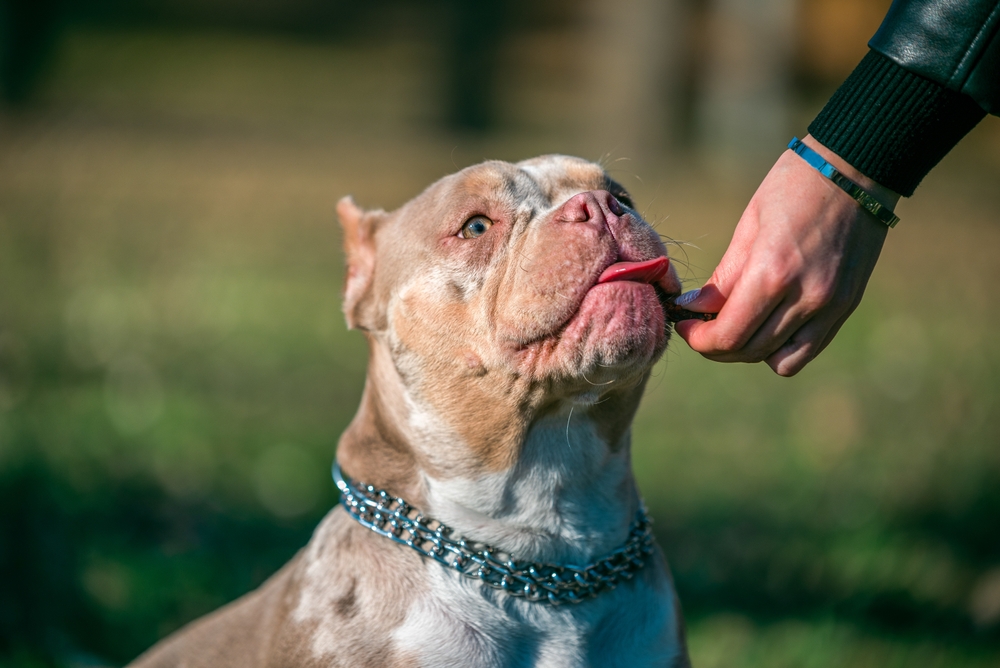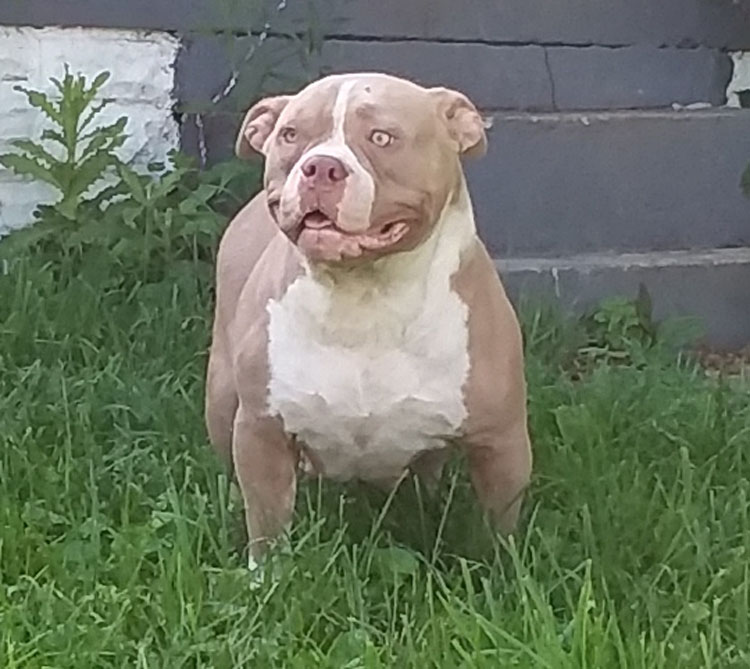 American Bully
American Bully
Why Are American Bullies So Popular Right Now?
Over the last decade, the American Bully has rapidly risen to become one of the most sought-after dog breeds in the world. From family homes to elite breeding programs, these muscular, confident companions are everywhere—and for good reason. But what exactly is behind this breed’s explosive popularity?
At Capcity Bullys, we’ve specialized in producing top-quality Micro Bullies with elite bloodlines, flawless structure, and dependable temperaments. In this blog, we’re breaking down the key reasons why American Bullies are so popular right now and why more dog lovers are choosing them as both pets and investments.
1. Unique Appearance That Turns Heads
One of the most obvious reasons American Bullies have exploded in popularity is their eye-catching appearance. With their blocky heads, wide chests, short and compact frames, and muscular builds, these dogs look like they walked out of a comic book.
Whether you’re drawn to the Pocket Bully, Micro Bully, or Standard American Bully, this breed offers a variety of sizes with equally impressive physiques. Their intimidating look contrasts with their often sweet, calm nature—making them a favorite for those wanting both form and function.
At Capcity Bullys, our breedings—like Mayor × Storm or Mayor × Raven—are specifically planned to lock in structure, head shape, and extreme features that define what people expect in a show-quality American Bully.
2. Temperament That Surprises People
Don’t let the tough look fool you. One of the biggest reasons families and breeders love American Bullies is their gentle, affectionate temperament.
Bred to be companion dogs, American Bullies are known for being:
Great with children
Loyal and protective
Easygoing and trainable
Social and stable
They don’t have the high-strung temperament of some other working breeds, and most well-bred Bullies are calm indoors and friendly with strangers when properly socialized.
At Capcity Bullys, our puppies are raised in family settings and socialized early, ensuring they’re not only beautiful but also emotionally balanced.
3. Social Media & Celebrity Influence
From Instagram to YouTube, the American Bully breed has gone viral. Influencers, celebrities, and high-profile breeders have helped bring massive attention to the breed by showing off their stunning dogs—and their luxurious lifestyles.
Accounts showing Micro Bullies with designer chains, exotic colors, and premium builds have created a demand for next-level breeding programs.
Famous kennels and influencers have introduced the public to bloodlines like:
Bape
Dax
Devilspit
Miagi / Giagi
Bullsace
As a kennel carrying many of these legendary bloodlines, Capcity Bullys has benefited from this boom by offering pups that are not only genetically elite but visually striking.
4. The Rise of the Micro Bully
The Micro Bully in particular has taken the breed’s popularity to new heights. These dogs are usually under 14 inches tall, but they pack the same muscle and bone as larger Bullies.
Why do people love Micro Bullies?
Easier to handle in small homes and urban environments
Still have the look of a full-sized Bully
Often used as foundation stock for breeders
Lower energy compared to larger breeds
Capcity Bullys is known for producing true, clean, correct Micro Bullies—not just undersized dogs, but compact powerhouses with extreme traits and elite pedigree.
5. Ideal for Breeding Programs
Another reason for the American Bully’s growing popularity is its value in breeding programs. The breed allows for strategic pairings, linebreeding, and bloodline development in a way that produces predictable, valuable outcomes.
Elite breeders are drawn to Bullies because they can:
Reinforce traits like head shape, bone, and temperament
Produce puppies with high resale or stud value
Tap into a booming global market
Build recognized kennel names and reputations
At Capcity Bullys, we work with breeders across the U.S. and ship nationwide, offering pups from champion-producing bloodlines like Bape, Bullsace, and Devilspit.
6. Easy to Care For (When Bred Right)
Compared to some high-energy or high-maintenance breeds, the American Bully is relatively low-maintenance when it comes to daily care. They have short coats that require minimal grooming and are generally healthy and hardy—as long as they come from responsible breeders.
Of course, not all Bullies are created equal. Poor breeding can lead to health problems and unstable temperaments.
That’s why responsible breeding is a must. At Capcity Bullys, all of our dogs are health-checked, registry-certified, and bred for structure and function, not just looks.
7. Loyalty, Confidence, and Companionship
At the end of the day, American Bullies are amazing companions. They’re confident without being aggressive, alert without being anxious, and loyal without being overprotective. For both families and individuals, they offer:
A stable household presence
A protective yet calm companion
A breed that adapts to both active and laid-back lifestyles
Whether it’s snuggling with kids, relaxing in the backyard, or walking proudly through the neighborhood, the American Bully brings presence and personality wherever it goes.
8. Breed Registries & Standardization
Organizations like the ABKC (American Bully Kennel Club) and ABR (American Bully Registry) have helped give the breed more legitimacy by defining classes, standards, and health guidelines.
Classes like:
Pocket Bully
Standard Bully
Classic Bully
XL Bully
Micro Bully (recognized by ABR)
…allow breeders and buyers to better understand what they’re getting. At Capcity Bullys, all our pups come with ABR registration and proper documentation so buyers know they’re getting the real deal.
Final Thoughts: The Hype Is Real—But So Is the Quality
So, why are American Bullies so popular right now?
Because they offer the full package:
✅ Show-stopping looks
✅ Calm, loving personalities
✅ Breeding potential
✅ Adaptability to modern lifestyles
But like all popular breeds, the key is buying from a reputable breeder who puts structure, health, and bloodline integrity first.
At Capcity Bullys, we’ve built our name on producing Micro Bullies that don’t just look the part—they live up to it. Every litter is intentional, every pairing planned, and every pup evaluated for structure, temperament, and long-term potential.
📍 Based in Erie, PA – Shipping Nationwide
🔗 Explore our available pups, breeding pairs, and updates at: www.capcitybullys.com
Find Your Perfect American Bully Puppy for Sale Today — Nationwide & Worldwide Delivery Available
Welcome to Cap City Bullys — The #1 Choice for Show-Quality American Bully Puppies
At Cap City Bullys, we’ve spent 15+ years perfecting the art of breeding purebred, registered American Bully puppies that stand out for their muscular conformation, rock-solid health, and calm, even temperaments. Located in Erie, Pennsylvania, our family-run kennel serves bully enthusiasts from New York to California—and ships champion-line puppies safely across the globe.
Puppies For Sale At Capcity Bullys
How to Tell If Your Bully Has a Strong Pedigree
How to Tell If Your Bully Has a Strong Pedigree
By Capcity Bullys – Home of Elite Micro Bullies
When you’re investing in an American Bully—whether for companionship, breeding, or showing—pedigree matters. A strong pedigree isn’t just about having popular names in a bloodline; it’s about proven quality, consistency, and generational excellence.
In this guide, we’ll break down what makes a strong American Bully pedigree, how to verify it, and why it matters—especially for breeders and enthusiasts looking to build next-level programs. At Capcity Bullys, our breeding program is built on pedigree strength, structure, and integrity, and we’re here to help you recognize what to look for.
🔍 What Is a Pedigree in the Bully World?
A pedigree is a documented lineage or ancestry of your Bully, often shown through registration papers like those from the American Bully Registry (ABR) or United Kennel Club (UKC). It traces the dog’s genetic background, usually for three to seven generations, and helps reveal the quality, health, and type consistency behind your Bully.
Strong pedigrees reflect dogs that are:
Well-structured and conformationally correct
Healthy, with low incidence of genetic disorders
Mentally stable and well-tempered
Champions or producers of champions
From respected, ethical breeding programs
🧬 1. Recognize Well-Known Bloodlines
One of the first steps to identifying a strong pedigree is recognizing dominant bloodlines. In the Micro Bully and Pocket Bully world, there are certain names that carry weight due to their impact and influence.
🔥 Top Bloodlines to Know:
Bape – Known for compact, extreme features and thick bone
Devilspit – Praised for structure, muscle tone, and temperament
Dax – A foundational name in the Bully community, producing many show champions
Bullsace – Clean, correct, and muscular lines
Miagi / Giagi – Distinctive exotic look with wide frames
If your Bully’s parents, grandparents, or great-grandparents come from these lines (and especially multiple times), you likely have a pedigree with depth and purpose.
✨ At Capcity Bullys, our studs and dams often trace directly to Bape, Devilspit, and Bullsace, allowing us to lock in elite traits through carefully planned linebreedings.
📄 2. Check Official Registration & Certifications
Strong pedigrees are almost always backed by official registration with breed-specific organizations. These include:
ABKC – American Bully Kennel Club
UKC – United Kennel Club
ABR – American Bully Registry
USBR, BBCR, BRC – Other respected registries
If your Bully is registered with one or more of these, ask for the pedigree certificate or “family tree.” Look for titles, championships, or noted producers in the ancestry.
🏆 Words like “Champion (CH), Grand Champion (GRCH),” or “Best in Show” in the lineage are major indicators of pedigree strength.
🧩 3. Look for Linebreeding — But Done Correctly
Many top breeders, including Capcity Bullys, use linebreeding to reinforce elite traits without compromising health. This means breeding dogs who are closely related (like cousins or siblings), often to lock in desired features like:
Blocky heads
Clean bite and conformation
Heavy bone and compact structure
Calm temperament
When done correctly with health and structure in mind, linebreeding can build consistent, recognizable dogs—something random breedings can’t achieve.
⚠️ Be cautious: Inbreeding or poorly planned linebreeding can lead to genetic weaknesses. That’s why reputation and experience in pedigree planning are key.
📸 4. Evaluate the Pedigree Through Structure & Type
Even without a certificate, you can assess pedigree strength by looking at your Bully’s physical traits and comparing them to proven standards.
Key Indicators:
Proportional, muscular build
Broad chest, compact body, thick bone
Straight top-line and tight feet
Clean bite and good headpiece (blocky, not exaggerated)
Confident, stable temperament
If your Bully checks these boxes and matches the look of other well-bred dogs from known bloodlines, it’s likely backed by a strong pedigree.
🧠 5. Temperament Tells a Story Too
A Bully’s mental and emotional stability is often inherited. Dogs from elite pedigrees are usually:
Confident, not fearful
Calm and even-tempered
Socialized and trainable
Non-aggressive toward humans (very important in this breed)
Even more, dogs from consistent bloodlines will display similar behavior patterns across litters. If a breeder can show you previous pups from the same line, and they all have similar temperaments—that’s pedigree working in real life.
🏆 6. Ask the Breeder About the Lineage
A knowledgeable breeder should be able to:
Break down the pedigree (3–4 generations or more)
Explain why they chose the pairing
Show you pictures or video of past litters
Speak about the strengths and health of each dog in the line
Be transparent about any challenges or traits they are improving
📣 At Capcity Bullys, we provide full background and photo lineage on every pup. We breed with purpose—every pairing is intentional, never accidental.
💡 7. Why Pedigree Matters for You
Whether you’re a breeder, show enthusiast, or Bully lover, knowing your dog’s pedigree gives you confidence in your investment. Strong pedigrees often mean:
Fewer health issues
Predictable adult size and appearance
Increased value for future breeding
Better structure and show potential
Stronger resale or stud value if applicable
For families, it also means getting a dog that is stable, predictable, and well-bred, making them easier to raise, train, and love.
🔗 Final Thoughts: Pedigree Is Power
A strong pedigree is more than just paper—it’s a blueprint of excellence, built generation after generation. At Capcity Bullys, we’ve dedicated years to refining our bloodlines, selecting only the best producers, and offering pups that represent the Micro Bully breed at its highest level.
If you’re considering a pup and want to ensure quality, health, and standout traits—start by looking at the pedigree.
📍 Located in Erie, PA – Capcity Bullys ships nationwide and works with serious buyers who value structure, temperament, and lineage.
👉 Explore our available pups and breedings at www.capcitybullys.com
Find Your Perfect American Bully Puppy for Sale Today — Nationwide & Worldwide Delivery Available
Welcome to Cap City Bullys — The #1 Choice for Show-Quality American Bully Puppies
At Cap City Bullys, we’ve spent 15+ years perfecting the art of breeding purebred, registered American Bully puppies that stand out for their muscular conformation, rock-solid health, and calm, even temperaments. Located in Erie, Pennsylvania, our family-run kennel serves bully enthusiasts from New York to California—and ships champion-line puppies safely across the globe.
Puppies For Sale At Capcity Bullys
What Is a Micro Bully? Everything You Need to Know About This Compact Powerhouse
When you think of an American Bully, images of muscular physiques and massive head structures often come to mind. But within the bully family, there’s a fascinating and rapidly growing category designed for maximum impact in a minimum size: the Micro Bully. Compact, powerful, and charismatic, this “tiny titan” continues to dominate the hearts of breeders and enthusiasts alike. If you’re curious about what sets Micro Bullies apart—and why Capcity Bullys specializes in these exceptional dogs alongside Pocket Bullies—read on to discover everything you need to know.
1. What Is a Micro Bully?
A Micro Bully is an unofficial variant within the American Bully breed, typically standing under 14 inches tall (often 10–13″) and built with remarkably dense muscle and bone. Despite their pint-size stature, Micro Bullies display the same powerful heads, thick necks, broad chests, and athletic presence of standard Bullies—only in a smaller, more compact package.
🟡 Key Traits:
Height: Generally 10–13″ at the withers
Build: Ultra-compact, robust structure with heavy bone
Head: Blocky, broad skull with well-defined jaw
Temperament: Charismatic, confident, and people-oriented
Micro Bullies blend impressive muscling and refined proportions into a smaller frame—a design both adored and sought after in the bully community.
2. Micro Bully vs. Pocket Bully: What’s the Difference?
Though both types fall in the compact bully category, their differences are distinct:
| Trait | Micro Bully | Pocket Bully |
|---|---|---|
| Height | 10–13″ | 14–17″ |
| Build | Exceptionally compact, thick bone | Slightly taller, balanced structure |
| Head | Extremely blocky and heavy | Well-defined but proportioned |
| Purpose | Specialty, rare, show/breeding focus | Companion, conformation, show potential |
Pocket Bullies, recognized by bodies like ABR, ABKC and UKC, offer a smaller alternative to Standards (~17–20″). Micro Bullies take compactness a step further recognized and by ABR and UKC.
3. Why the Micro Bully Trend is Booming
🔹 Instant “WOW” Factor
When people see a Micro Bully for the first time, their reaction is immediate: a small dog that looks like a champion bodybuilder.
🔹 Elite Genetics
Breeding a Micro Bully requires careful strategy—close-line breeding, selection for ultra-compact frames, and confirmation of health and temperament. The result? A high-demand dog with rare genetics.
🔹 Versatility
Micro Bullies suit small living spaces better than larger bully types. Despite size, they are energetic, athletic, and ideal for active families.
🔹 Breed Evolution
With breeder innovation, Micro Bullies are shaping the future of the American Bully breed—taking the best traits (muscle, structure, temperament) and condensing them into a more accessible size.
4. Capcity Bullys: Erie, PA’s Micro & Pocket Bully Experts
At Capcity Bullys, located in Erie, PA, we’ve dedicated years to perfecting Micro and Pocket Bully breeding. Here’s what sets us apart:
🛠️ Precision Breeding
We strategically pair dogs like Mayor (grandson of Bape) and Storm (Youngblood × Bullsace), fine-tuning size, bone, and structure to produce Micro Bullies with massive impact.
🌟 Champion Pedigrees
Our breeding stock features elite bloodlines—Bape, Youngblood, Bullsace, Daredevil—ensuring our puppies inherit proven muscle, temperament, and confirmation.
🇺🇸 ABKC-Pocket Standards
While our Micros often fall below ABKC Pocket height, we maintain the same conformation focus to meet show-quality standards in a boutique package.
🏡 Family-Raised & Socialized
All puppies are raised in a nurturing family environment. Early interaction with humans, sights, and sounds ensures well-rounded, confident dogs.
🌍 Serving PA/NY/OH
Erie, PA is home base for our program, but we proudly serve families and breeders across Pennsylvania, New York, Ohio—and offer nationwide shipping.
5. Choosing Between Micro & Pocket Bully
❓ Ask Yourself:
Space constraints – Studio apartment or large backyard?
Family dynamic – Kids? Seniors? Seniors typically prefer smaller Micros.
Investment and rarity – Micro Bullies are rare and in high demand.
Once you’ve identified your needs, Capcity Bullys can guide you to the perfect fit: miniature power with Micro Bullies or show-ready Pocket pups.
6. Micro Bully Care: Diet, Training, & Health
🍖 Nutrition
High-protein, meat-based diets fuel their muscular bodies. Supplements like glucosamine support joint health in these muscular mites.
🏋️ Training
Short, consistent training works best. They learn quickly, respond well to positive reinforcement, and bond strongly with their owner. Agility or obstacle courses are excellent outlets for their athleticism.
🛁 Grooming
They have single-layer coats—minimal shedding, easy to groom. Weekly brushing and regular nail trims keep them looking sharp.
🩺 Health Monitoring
Despite petite size, they require careful attention to hips and joints. Regular vet check-ups and healthy weight management are key.
7. What You Get from Capcity Bullys
When choosing a Micro or Pocket Bully, you’re not just getting a dog—you’re receiving:
Elite Micro & Pocket Bully puppies, bred to excel in structure, muscle, and temperament
Full health documentation—vet records, wellness checks, genetic testing
American Bully Registry or ABKC Pocket registration
Lifetime breeder support—guidance on nutrition, training, structure
Guaranteed clean structure and phenomenal bully type
8. Frequently Asked Questions
Q: Do you offer both Micro and Pocket Bully puppies?
Yes—we specialize in both, providing family-friendly companions and show-quality pups.
Q: What’s the difference in pricing?
Micro Bullies often carry a premium due to rarity. Pricing reflects bloodline, size, and structure.
Q: Do Micro Bullies stay small?
Generally, yes. They reach adult size (~10–13″) and stay compact. Early vet care and healthy weight maintenance support proper growth.
Q: Are these dogs good with families?
Absolutely. American Bullies are known for being loyal, gentle, and great with kids—regardless of size.
Q: Can I meet a stud or adopt an adult Bully?
We offer stud services and occasionally list adult dogs. Visit our “Stud Service” page for details.
9. Choosing Your Perfect Pup
Browse current litters – Our site showcases Micro and Pocket Bully puppies available now.
Read bloodline and structure data – See head-to-tail information to know exactly what you’re getting.
Secure your puppy – Reserve early with a deposit.
Prepare your home – We’ll send a complete care guide for your new companion.
Stay connected – Regular check-ins, photo updates, and support from the Capcity Bullys team.
10. Final Thoughts: The Power of Compact
Micro Bullies pack undeniable physical presence into small frames. Their combination of muscle, structure, and charisma creates a canine experience like no other. At Capcity Bullys, we’re proud to be innovators in this niche. With selective breeding, ethical values, and a drive for excellence, we produce Micro and Pocket Bullies designed for families, shows, and breeding success.
Ready to meet a compact powerhouse? Visit the Capcity Bullys website today to explore upcoming litters, history-rich bloodlines, and program details.
📍 Erie, Pennsylvania—serving PA, NY, OH
🐾 CapcityBullys.com | Follow us on Instagram & Facebook
Find Your Perfect American Bully Puppy for Sale Today — Nationwide & Worldwide Delivery Available
Welcome to Cap City Bullys — The #1 Choice for Show-Quality American Bully Puppies
At Cap City Bullys, we’ve spent 15+ years perfecting the art of breeding purebred, registered American Bully puppies that stand out for their muscular conformation, rock-solid health, and calm, even temperaments. Located in Erie, Pennsylvania, our family-run kennel serves bully enthusiasts from New York to California—and ships champion-line puppies safely across the globe.
Puppies For Sale At Capcity Bullys
🔥 Mayor × Raven Litter Has Landed – Heavy Bape Bloodline at Capcity Bullys 🔥
Capcity Bullys is proud to announce the arrival of 2 power-packed Micro Bully females from our elite in-house breeding between Mayor and Raven — both direct grandchildren of the legendary Bape. This tight linebreeding is a strategic move to lock in extreme traits, structure, and pedigree that define the very best in the American Bully world.
📅 Born May 31st, 2025
👑 2 females [1 white, 1 lilac]
🧬 Bloodline Breakdown:
Mayor – Thick-boned, compact, and muscular, Mayor is the definition of a true Micro Bully. With a calm demeanor and flawless structure, he brings the best of the Bape line to the table.
Raven – A lilac beauty with heavy bone, clean lines, and a presence that commands attention. Raven doubles up on Bape blood, tracing through her sire Snowball and dam Coffee, a direct Bape daughter.
This pairing was carefully designed to preserve and enhance the world-famous Bape look — expect pups with:
✅ Blocky heads
✅ Clean conformation
✅ Muscular builds
✅ Short, thick frames
📍 Located in Erie, PA | 🌐 Nationwide Shipping Available
Female
Xena
Price $2,900.00
FOR MORE INFORMATION CALL OR TEXT (614) 507-9702
Find Your Ideal American Bully Puppy
Cap City Bullys connects families with registered American Bully puppies for sale that perfectly match your lifestyle.
Adult Bullies Occasionally Available
Looking for a more mature companion? We sometimes offer adult American Bullies that are well-mannered.
Upcoming Pups Pedigree
MAYOR  Capcity Bullys | SNOWBALL  Lifeliver Bully | FRANK 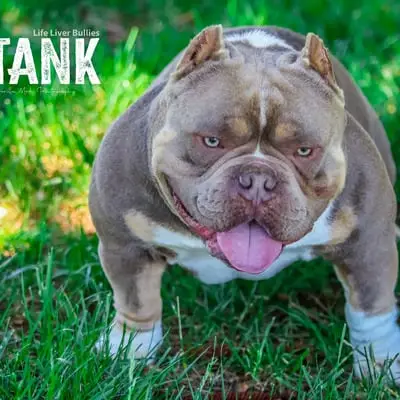 Lifeliver Bully |
RUNTS 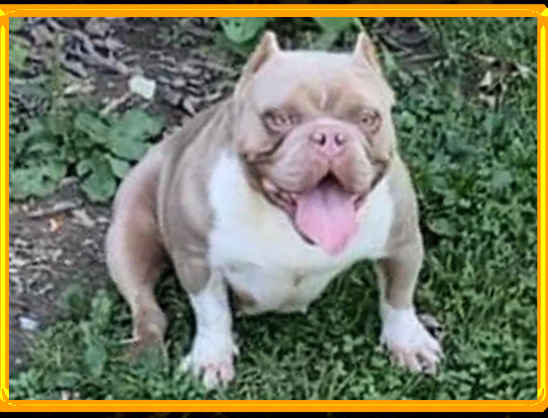 Lifeliver Bully | ||
COFFEE  Capcity Bullys | BAPE 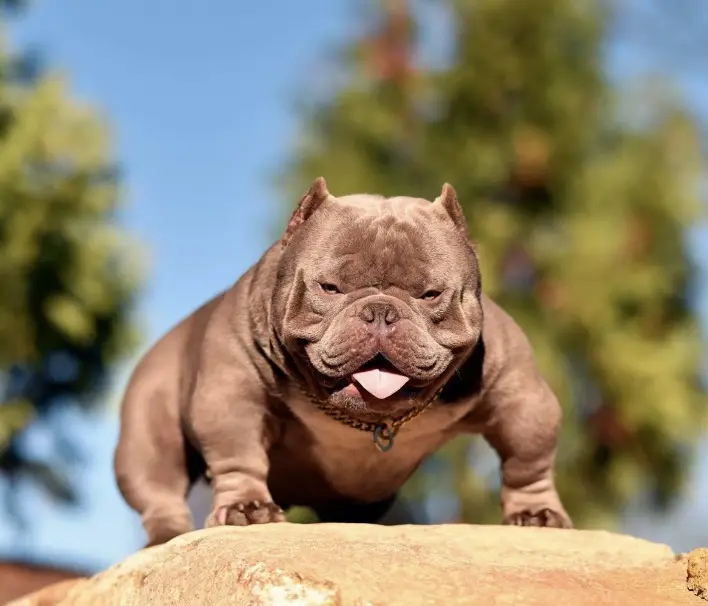 IB's | |
LULU 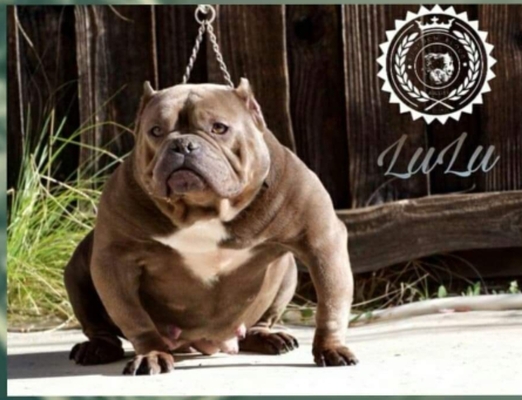 Harpers | ||
RAVEN 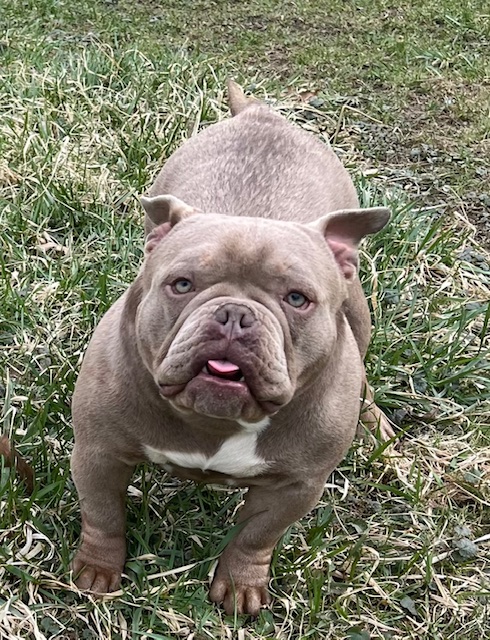 Capcity Bullys | SNOWBALL  Lifeliver Bully | FRANK  Lifeliver Bully |
RUNTS  Lifeliver Bully | ||
COFFEE  Capcity Bullys | BAPE  IB's | |
LULU
Harpers |
Raven
Raven – Lilac Female Micro Bully | Capcity Bullys
Meet Raven, our stunning lilac female Micro Bully who represents the pinnacle of elite American Bully bloodlines. Raven is short, compact, and thick with heavy bone, showcasing the extreme features and clean structure the Micro class is known for. She’s the granddaughter of the legendary Bape, one of the most influential names in the American Bully world. Her dam, Coffee, is a direct Bape daughter, while her sire, Snowball, carries Bape blood top and bottom, making Raven heavily stacked with this iconic lineage.
With her broad chest, muscular frame, and bold presence, Raven is a standout in our program and a future producer of high-quality, show-stopping puppies. Her pedigree is filled with proven champions, and her structure, color, and temperament make her a valuable asset to any serious Micro Bully breeding program. Raven is a true definition of power, pedigree, and presence.

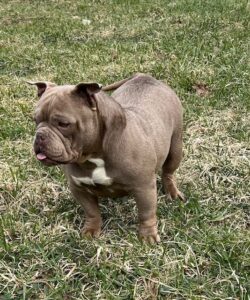
Ravens Pedigree
Snowball 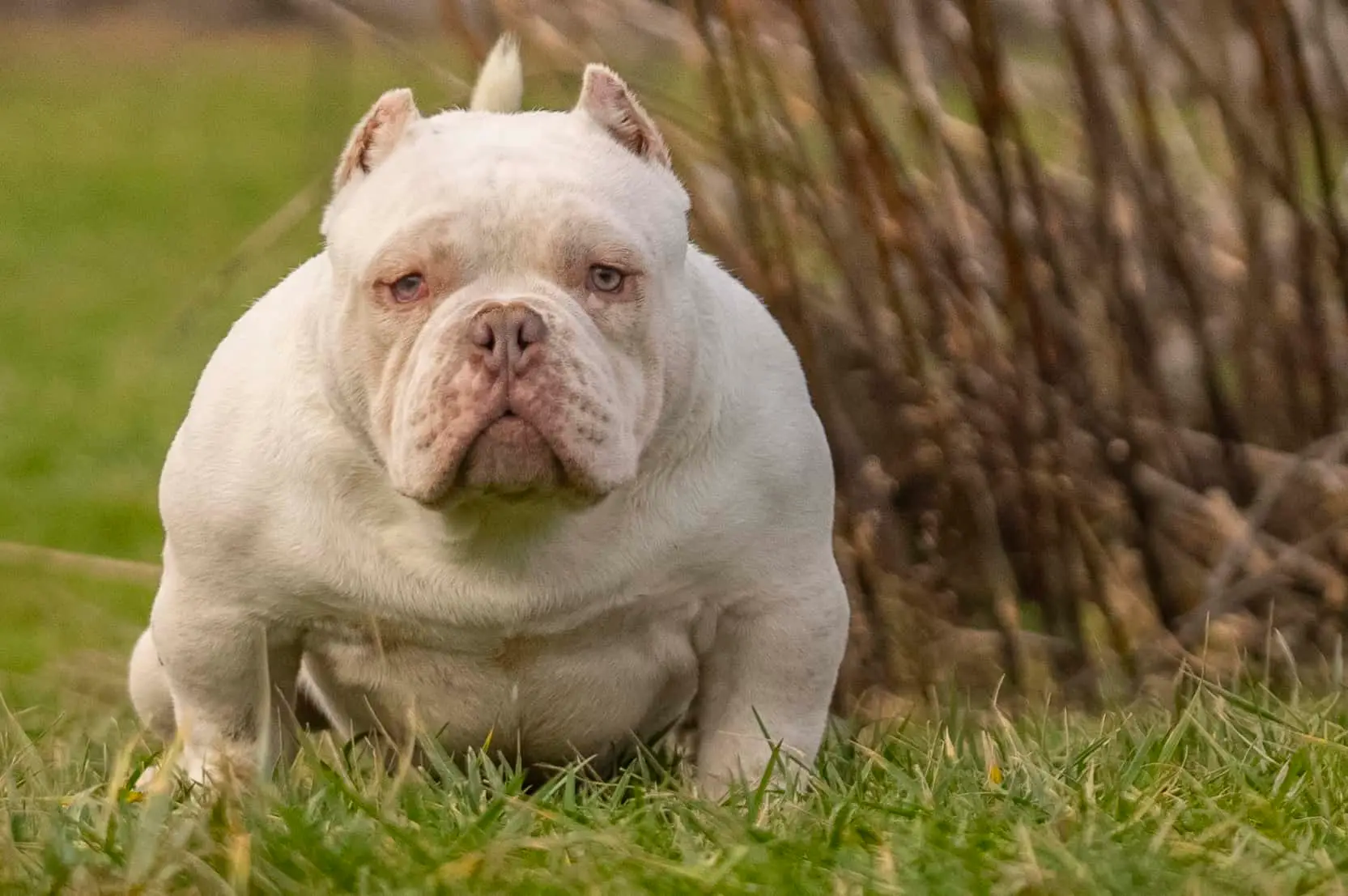 Life liver Bully | Frank  Liver Bully House | Mr. Big 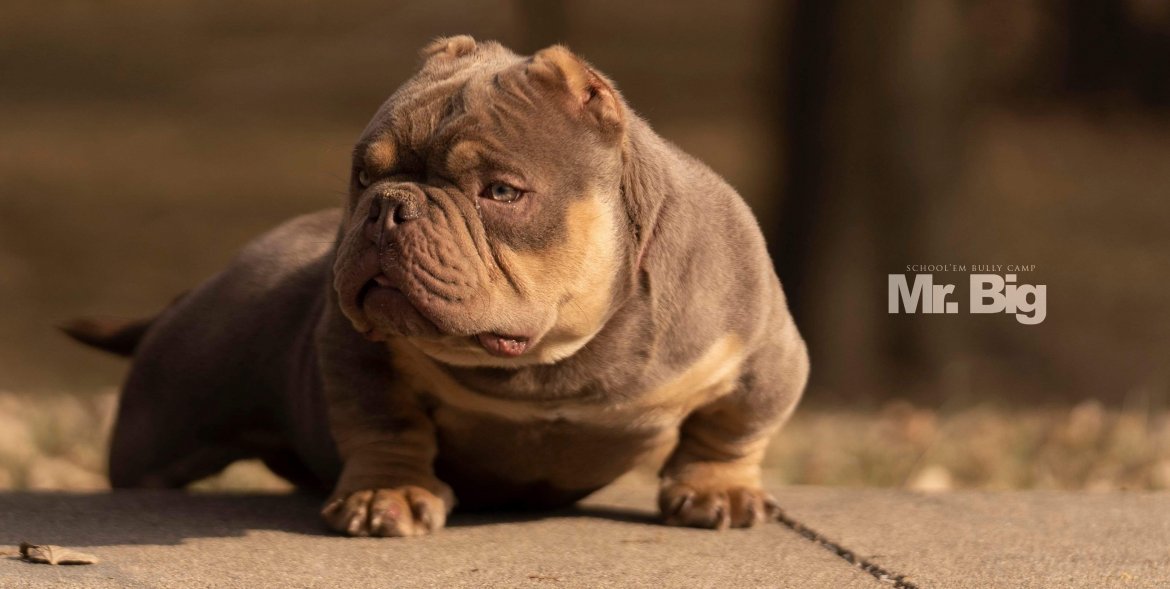 Schoolem Bully Camp |
Athena 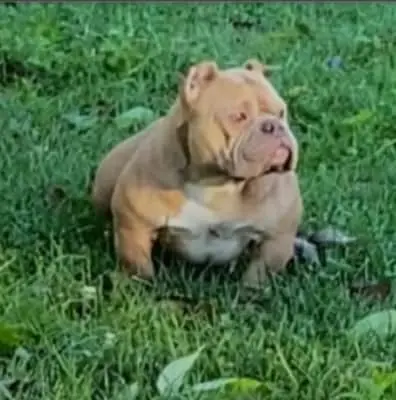 Liver Bully House | ||
Runts  Liver Bully House | Michael  Time Bomb Bullys | |
Time Bomb Bonnie  Life LiverBully | ||
Coffee  Capcity Bullys | Bape  IB's | Ape 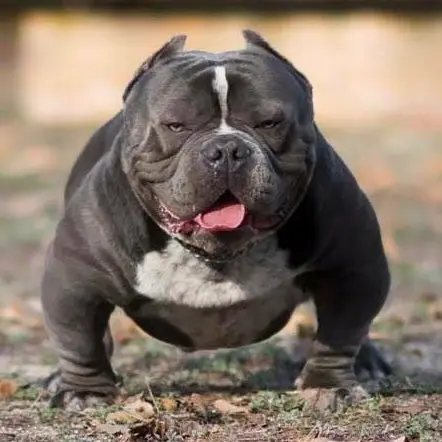 Jaggerlines |
Khaleesi  IB's | ||
Lulu 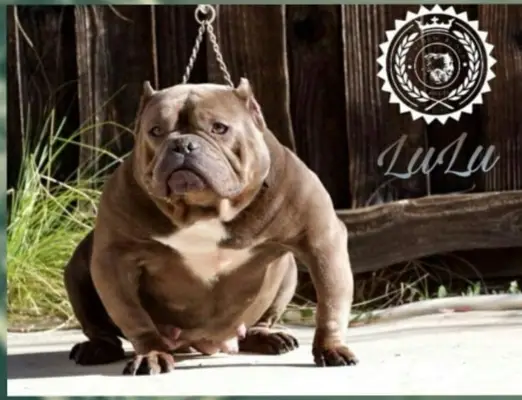 Harpers | Compton  Steelbred Kennel | |
Vega
Designer Bullies |
🔥 The Pups Are Here! Mayor x Storm Litter Has Landed at Capcity Bullys 🔥
Capcity Bullys is excited to announce that our highly anticipated Mayor × Storm litter has officially arrived! Born May 21st, 2025, this powerhouse breeding produced 3 stunning Micro Bully puppies — 1 male and 2 females — each showcasing the elite structure, muscle, and pedigree Capcity is known for.
Mayor, a thick-boned, compact stud, is the grandson of the legendary Bape — one of the most iconic names in the American Bully world. Known for producing clean, correct, and muscular Bullies, Bape’s influence shines through in Mayor’s flawless structure and calm temperament.
Storm, the dam, is the daughter of Capcity’s own Youngblood and the granddaughter of the great Bullsace, bringing additional elite blood through legends like Daredevil. Her bold presence, heavy bone, and clean lines perfectly complement Mayor’s look and pedigree.
This breeding was carefully designed to produce pups with:
Blocky heads
Extreme features
Thick bone & muscle tone
Clean, compact Micro Bully builds
🚨 These puppies are the future of Micro Bully excellence.
Females
Luna
A Micro female with a broad chest and tight structure, this girl is a standout. Clean bite, short back, and tons of bone make her breeding and show-quality certified.
Missy
A Micro female with compact frame with flawless lines, this pup is sweet but built like a beast. Carries the best of Mayor and Storm—perfect for families or breeders seeking Micro Bully perfection.
Price Of Pups $900.00
FOR MORE INFORMATION CALL OR TEXT (614) 507-9702
Pups Pedigree
MAYOR  Capcity Bullys | SNOWBALL  Lifeliver Bully House | FRANK  Lifeliver Bully House |
RUNTS  Lifeliver Bully House | ||
COFFEE  Capcity Bullys | Bape  IB's | |
LULU  Harpers | ||
STORM  Capcity Bullys | YOUNGBLOOD 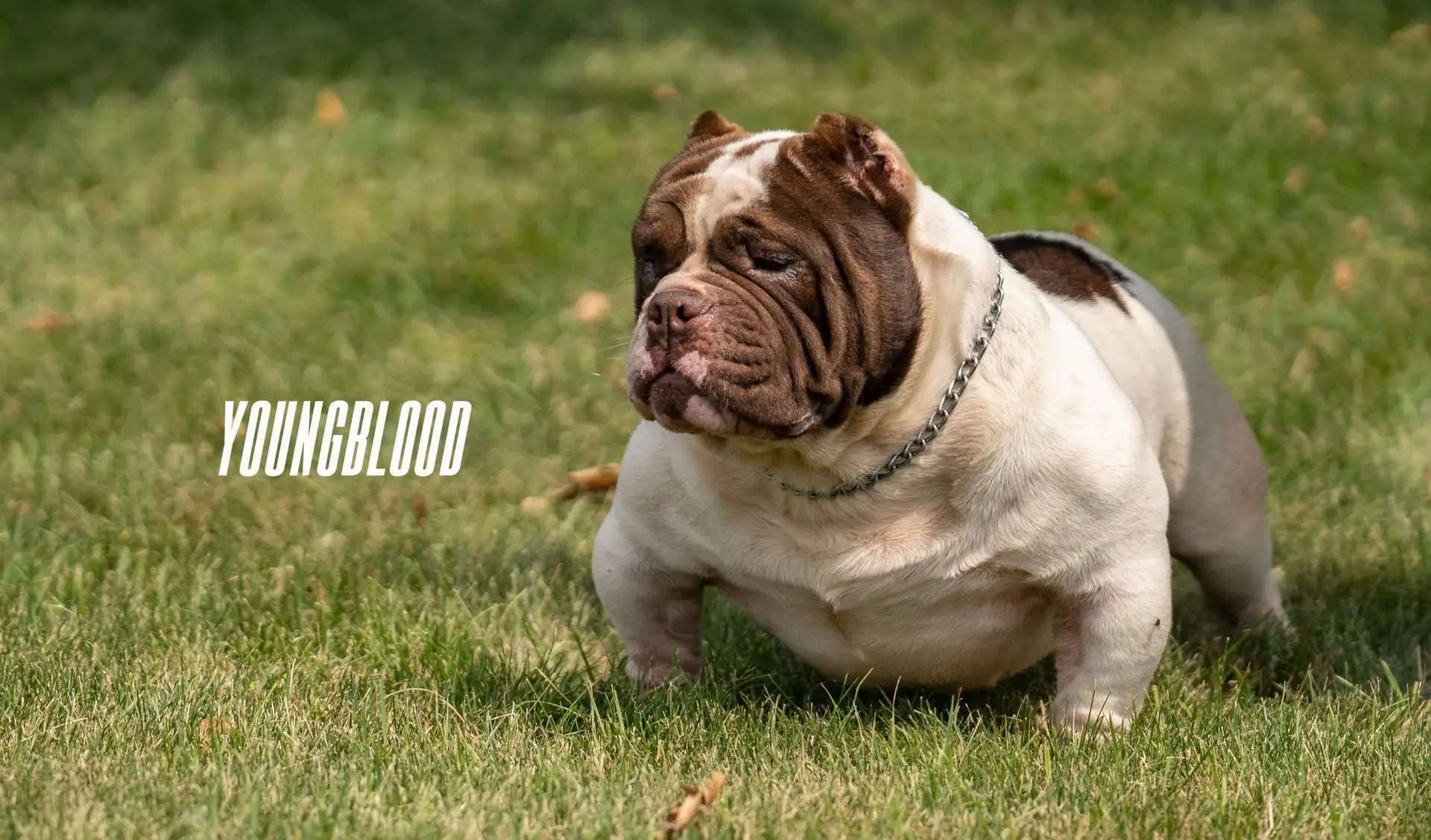 Freakline Bullys | BULLSACE 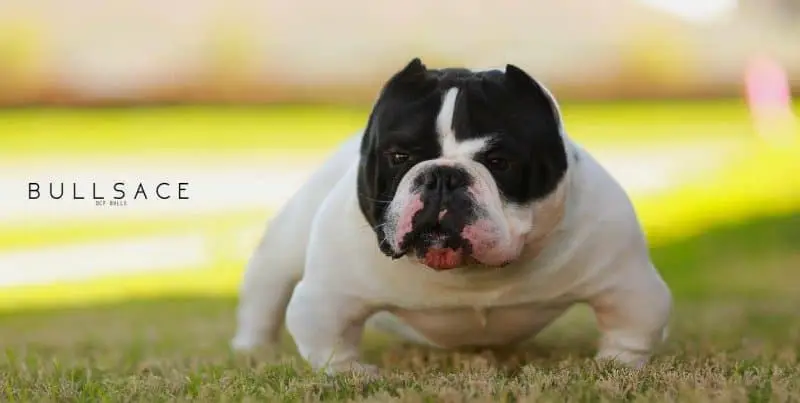 DCF Bulls |
HIROSHIMA  SBC | ||
AUDI 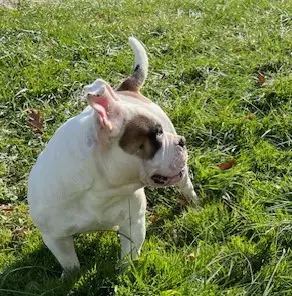 Big Bag Bullies | YOUNGBLOOD  Freakline Bullys | |
COOKIE
Big Bag Bullies |
Storm
🐾 Meet Storm – Capcity Bullys’ Elite Micro Bully Female 🐾
Storm is a stunning Micro Bully with a short, compact frame and a powerful, muscular build, making her a standout female in our breeding program. She is the daughter of Capcity’s Youngblood and the granddaughter of the world-renowned Bullsace, inheriting elite bloodlines known for exceptional structure, muscle tone, and breed type. Storm’s pedigree is stacked with Youngblood, Bullsace, and Daredevil blood, giving her a flawless blend of strength, bone thickness, and clean features.
Her athletic frame, broad chest, and bold stance make her a prime foundation female, producing top-tier Micro Bullies with impressive muscle definition and perfect proportions. Storm’s balanced temperament and confident demeanor make her the ideal combination of beauty and strength.
At Capcity Bullys, we are proud to have Storm as a cornerstone of our breeding program, passing on her legendary bloodlines to the next generation. 💥
🔥 Contact us today for upcoming litters or breeding inquiries! 🔥
Storm’s Pedigree
YOUNGBLOOD 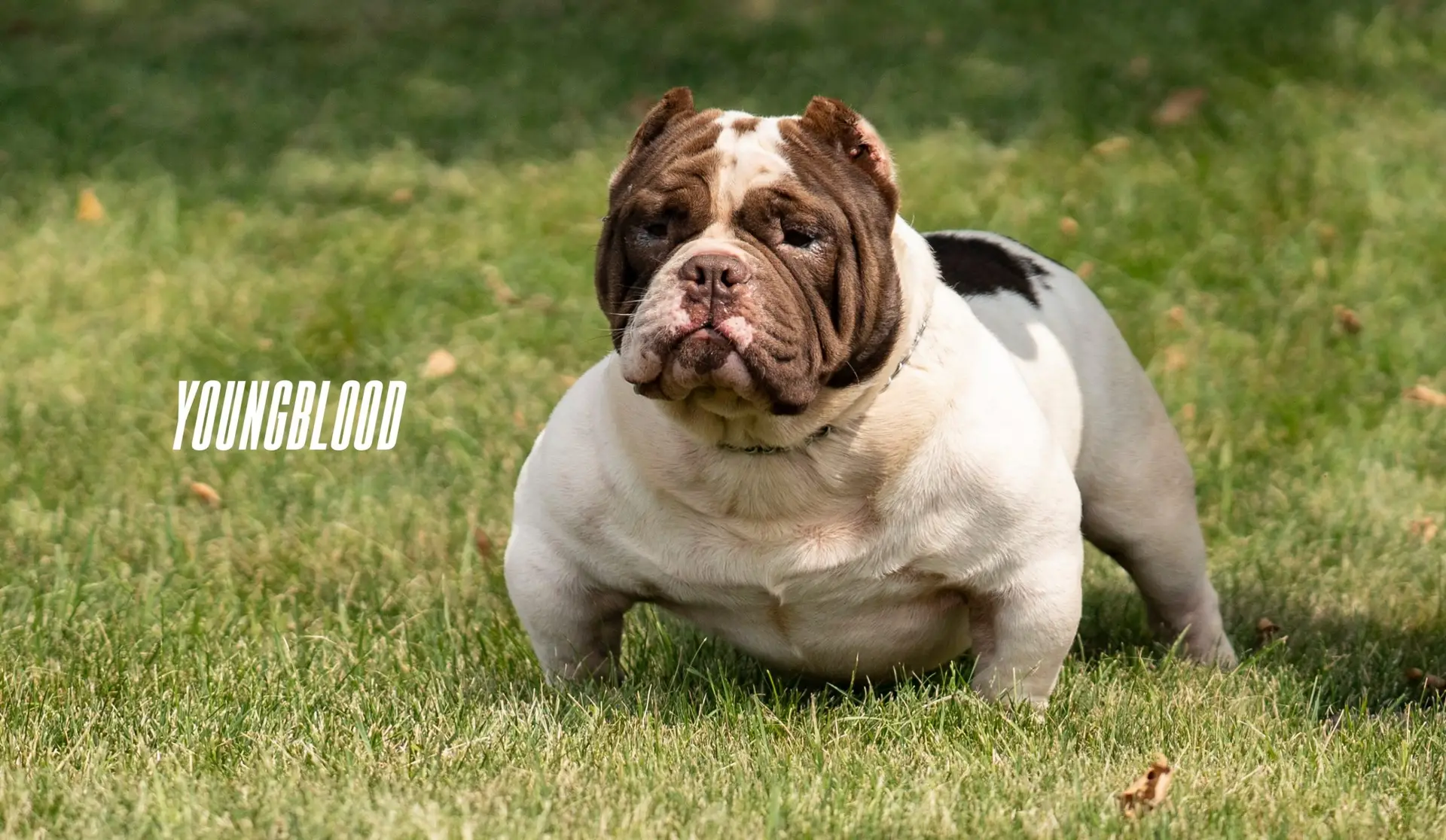 Freaklines | BULLSACE 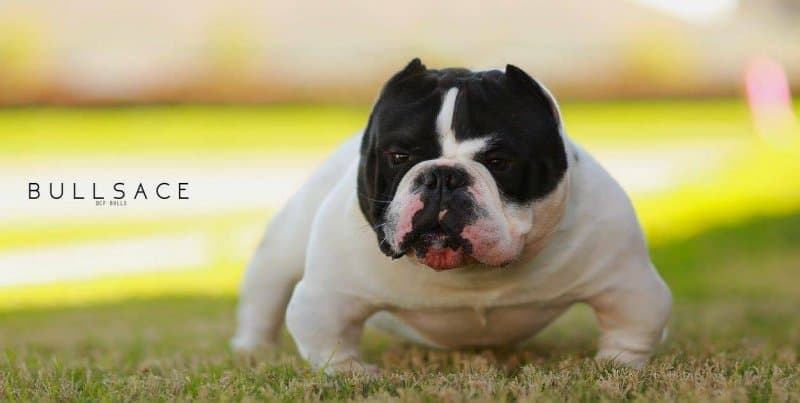 DCF Bulls | BULLSEYE 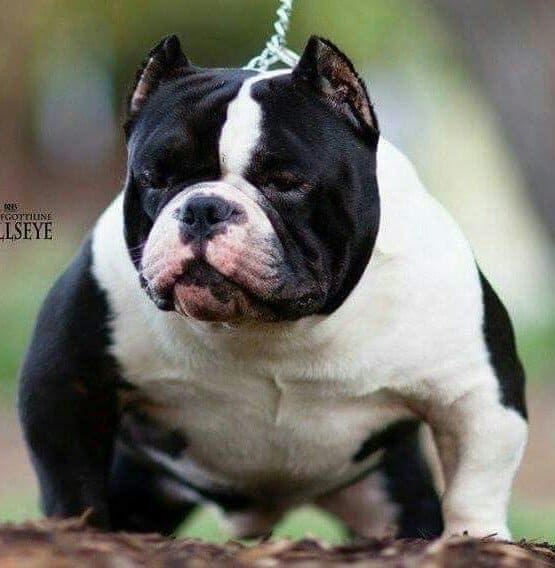 EOG's |
Ms Fairy Tail 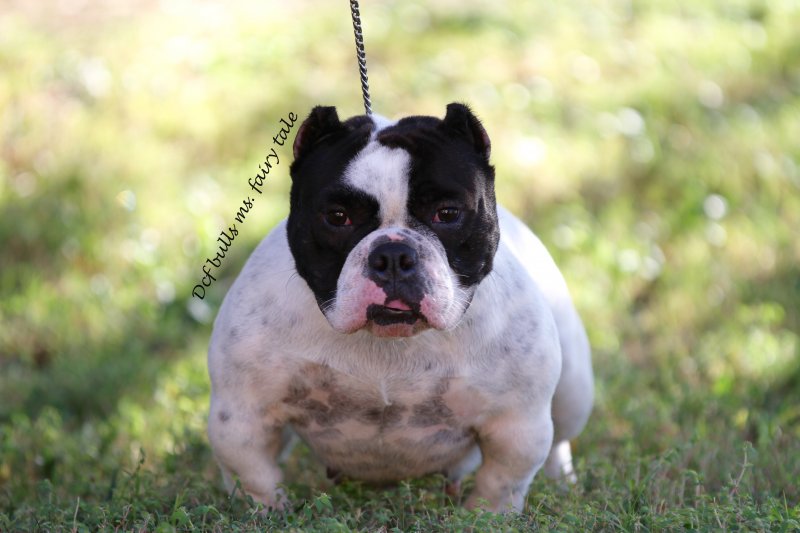 DCF Bulls | ||
HEROSIMA  SBC | C4  508 Bullies | |
RAVEN  SBC | ||
AUDI 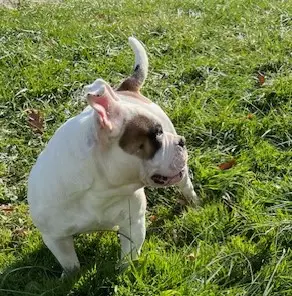 Capcity Bullys | GHOST 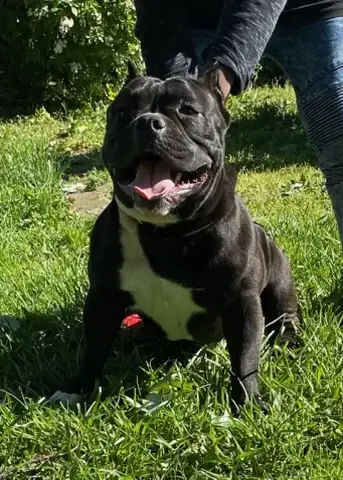 Capcity Bully | LUCIFER 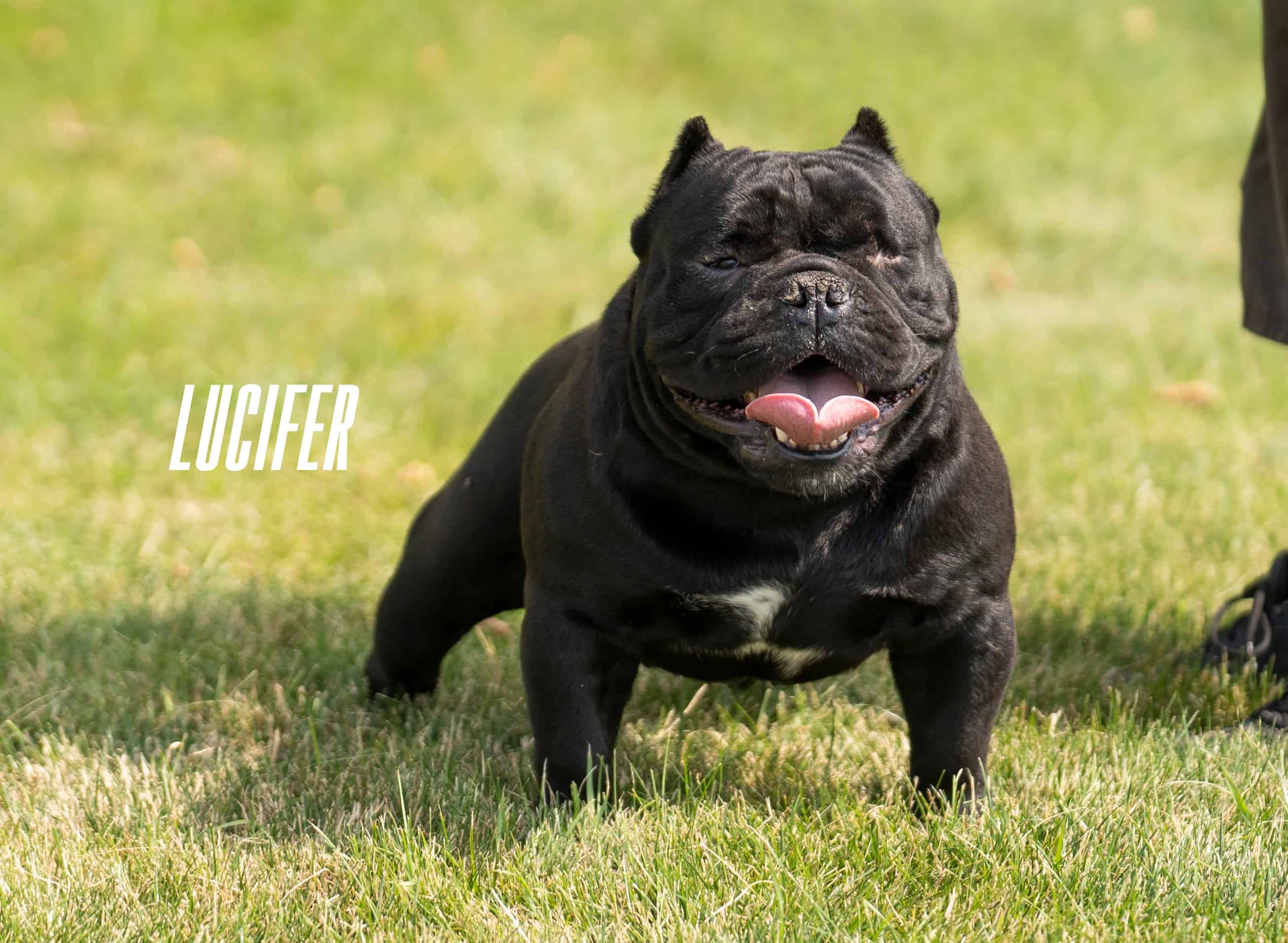 Freakline Bullies |
MISSANDEI  Capcity Bullys | ||
Cookie  Big Bag Bullies | YOUNGBLOOD  Freakline Bulls | |
MISSANDEI
Capcity Bullys |
Mayor
🐾 Meet Mayor – Capcity Bullys’ Elite Micro Bully Stud 🐾
Mayor is the epitome of Micro Bully excellence, boasting a short, compact frame, thick bone structure, and a blocky head that commands attention. This powerhouse Bully is the grandson of the world-renowned Bape, one of the most sought-after bloodlines in the American Bully world. With heavy Bape influence throughout his pedigree, Mayor carries the elite genetics known for producing clean structure, massive muscle, and extreme features.
His impressive build, broad chest, and powerful stance make him a standout stud, ideal for breeders seeking to enhance their program with next-level muscle tone, thick bone, and perfect proportions. Mayor’s calm and confident temperament makes him not only a striking stud but also a loving companion.
At Capcity Bullys, we’re proud to have Mayor producing top-tier Micro Bullies, carrying on the legendary Bape bloodline. 💥
🔥 Contact us today to reserve a stud service or learn more! 🔥
STUD FEE $1,500.00
FOR MORE INFORMATION CALL OR TEXT (614) 507-9702
Mayors Pedigree
Snowball  Life liver Bully | Frank  Liver Bully House | Mr. Big  Schoolem Bully Camp |
Athena  Liver Bully House | ||
Runts  Liver Bully House | Michael  Time Bomb Bullys | |
Time Bomb Bonnie  Life LiverBully | ||
Coffee  Capcity Bullys | Bape  IB's | Ape  Jaggerlines |
Khaleesi  IB's | ||
Lulu  Harpers | Compton  Steelbred Kennel | |
Vega
Designer Bullies |
Nutrition Tips for Building Muscle in Your American Bully
The American Bully is known for its muscular build, powerful physique, and athletic nature. To maintain and enhance their muscle tone, providing a high-quality, protein-rich diet is essential. Proper nutrition fuels muscle growth, improves overall health, and keeps your Bully in peak condition. Whether you own a Micro Bully, Pocket Bully, Standard, or XL Bully, the right diet and feeding routine will help maximize their muscular potential.
At Capcity Bullys, we prioritize top-tier nutrition for our Bullies to ensure they develop thick, strong, and well-defined muscle structure. Here’s a breakdown of the best nutrition tips to help your American Bully build muscle effectively.
1. Prioritize a High-Protein Diet
Protein is the foundation of muscle growth. American Bullies require high-quality animal protein sources to develop strong, lean muscle. Aim for a diet that consists of at least 30-40% protein to support muscle repair and growth.
Best Protein Sources for American Bullies:
✔ Raw or Cooked Meat – Beef, chicken, turkey, lamb, and fish
✔ Eggs – A great source of digestible protein and amino acids
✔ Salmon & Fish Oil – Rich in omega-3 fatty acids for muscle recovery
✔ Organ Meat (Liver, Heart, Kidneys) – Packed with essential nutrients
✔ High-Protein Kibble – Choose premium dog food with meat as the first ingredient
A raw diet or a high-quality kibble mixed with fresh protein can significantly enhance your Bully’s muscle tone and physical development.
2. Include Healthy Fats for Energy and Muscle Recovery
Fats provide long-lasting energy and help with muscle repair and joint health. Healthy fats should make up 15-20% of your Bully’s diet.
Best Sources of Healthy Fats:
🐟 Fish Oil & Salmon – Reduces inflammation and enhances coat health
🥑 Coconut Oil & Flaxseed Oil – Supports digestion and energy levels
🥩 Animal Fat (Beef & Chicken Fat) – Essential for weight gain and muscle maintenance
Healthy fats also help improve stamina and endurance, ensuring your Bully remains active and ready for training.
3. Use Muscle-Building Supplements
Supplements can enhance muscle growth and recovery, especially when combined with a balanced diet. Here are some of the best supplements for American Bullies:
🔥 Whey Protein Powder – Boosts muscle recovery and mass
🔥 Creatine Monohydrate – Enhances strength and endurance
🔥 Glucosamine & Chondroitin – Supports joint health and mobility
🔥 Multivitamins – Ensures a well-rounded nutrient intake
🔥 Amino Acids (BCAAs) – Helps with muscle repair and prevents breakdown
Always choose dog-safe supplements and consult a vet before adding them to your Bully’s diet.
4. Follow a Structured Feeding Schedule
A consistent feeding schedule ensures that your American Bully gets the right nutrients at the right time.
Recommended Feeding Plan:
🐶 Puppies (Under 6 Months) – 3-4 small meals per day
🐶 Young Bullies (6-12 Months) – 3 meals per day
🐶 Adult Bullies (12+ Months) – 2 protein-packed meals per day
Feeding after exercise helps replenish energy stores and supports faster muscle recovery.
5. Hydration is Key for Muscle Performance
Proper hydration is essential for muscle function and recovery. Dehydration can lead to fatigue, muscle cramps, and slower recovery. Ensure your Bully always has access to fresh, clean water, especially after intense activity or training.
Final Thoughts
Building muscle in your American Bully requires a high-protein diet, healthy fats, muscle-building supplements, and a structured feeding plan. At Capcity Bullys, we ensure our Bullies get premium nutrition to develop strong, well-defined muscle tone.
Want to learn more about feeding and caring for your American Bully? Visit our Blog section for expert tips and high-quality Bully puppies bred for strength and structure!
CapCity Bullys: American Bully Puppies for Sale in Erie, PA
Welcome to Cap City Bullys, your premier source for show-quality American Bully puppies in Erie, Pennsylvania. Backed by over 15 years of experience, we specialize in breeding purebred, registered American Bullies known for their exceptional temperaments, robust health, and champion bloodlines.
Why Choose Cap City Bullys?
Expertise in Elite Bloodlines
We work with top-tier American Bully bloodlines to produce puppies with strong conformation, muscular build, and even temperaments. Our program includes champion pedigrees to ensure each puppy exemplifies the breed’s finest traits.
Prime Location with Nationwide & Global Reach
Based in Erie, PA, we are conveniently located for families in Cleveland, Pittsburgh, and Buffalo. For customers beyond driving distance, we provide safe worldwide shipping, so your new American Bully companion arrives securely.
Family-Focused, Ethical Breeding
As a family-run kennel, our puppies are raised in a nurturing environment. Early socialization helps them adapt easily to new homes, ensuring they become well-rounded, loving family members.
Let Us Help You Find Your Perfect American Bully
At Cap City Bullys, our goal is to match each family with an American Bully that aligns with their lifestyle and aspirations. Whether you’re looking for a show prospect or a loyal companion, we’re here to help.
Contact us today to begin the exciting journey of bringing home a well-bred, affectionate, and elite American Bully.
Find Your Perfect American Bully Puppy for Sale Today — Nationwide & Worldwide Delivery Available
Welcome to Cap City Bullys — The #1 Choice for Show-Quality American Bully Puppies
At Cap City Bullys, we’ve spent 15+ years perfecting the art of breeding purebred, registered American Bully puppies that stand out for their muscular conformation, rock-solid health, and calm, even temperaments. Located in Erie, Pennsylvania, our family-run kennel serves bully enthusiasts from New York to California—and ships champion-line puppies safely across the globe.
Puppies For Sale At Capcity Bullys
Top American Bully Breeder in Erie, PA: Serving Ohio, Pennsylvania & New York
If you’re searching for a top American Bully breeder in Erie, PA, look no further than Capcity Bullys. Specializing in Micro Bullies with elite bloodlines, exceptional structure, and outstanding temperaments, we proudly serve families and breeders throughout the Tri-State area, including Ohio, Pennsylvania, and New York.
At Capcity Bullys, we’re committed to breeding high-quality American Bully puppies that meet the highest standards in health, appearance, and personality. Whether you’re a first-time Bully owner or an experienced breeder, we’re here to help you find the perfect puppy.
🐾 Why Choose Capcity Bullys in Erie, PA?
✅ Elite Bloodlines and Superior Genetics
We understand that bloodline is crucial when selecting the perfect American Bully. Our breeding program features world-class bloodlines, including Devilspit, Giagi, and Bullsace, known for producing Bullies with strong, compact frames, muscular builds, and loving temperaments.
By focusing on these elite bloodlines, Capcity Bullys ensures each puppy possesses the ideal characteristics that make Micro Bullies so desirable:
Thick bone structure
Wide chests and blocky heads
Short, compact bodies
Loyal and affectionate personalities
🏡 Serving Erie, PA & the Tri-State Region
Located in Erie, Pennsylvania, we’re strategically positioned to serve the Tri-State area:
📍 Pennsylvania: From Erie to Pittsburgh and Philadelphia
📍 Ohio: Including Cleveland, Columbus, and Cincinnati
📍 New York: From Buffalo to Rochester and beyond
Our puppies are available to families, individuals, and breeders throughout these regions who are searching for high-quality American Bully puppies backed by a reputable breeder.
💡 What Sets Capcity Bullys Apart?
❤️ Health and Temperament Come First
At Capcity Bullys, we prioritize the health and well-being of every puppy. All our American Bully puppies come with:
🏥 Health certificates from licensed veterinarians
💉 Up-to-date vaccinations and deworming records
🧬 Genetic testing for common hereditary conditions
🐶 American Bully Registry (ABR) registration
Our puppies are raised in a clean, loving environment, ensuring they’re well-socialized and ready to join their new families.
🌟 Specializing in Micro Bullies
While there are many types of American Bullies, including Pocket, Standard, Classic, and XL, we specialize in the highly sought-after Micro Bully.
🏆 Why Choose a Micro Bully?
Compact yet muscular: Perfect for families seeking a manageable size with a powerful look.
Family-friendly temperament: Loyal, affectionate, and great with children.
Low maintenance: Ideal for both city living and suburban homes.
Our Micro Bullies are bred for extreme thickness, clean structure, and an impressive appearance that turns heads.
🐕 Choosing the Right American Bully for Your Family
Finding the perfect American Bully puppy involves more than just looks. Here’s what you should consider:
🔍 1. Temperament
Playful & Friendly – Great for families with young children.
Confident & Protective – Ideal for security-conscious homes.
Calm & Easygoing – Best for low-energy households.
At Capcity Bullys, we match each puppy’s personality with the right family to ensure a perfect fit.
🧬 2. Bloodline & Pedigree
A strong bloodline guarantees top-tier genetics and superior qualities. Our puppies feature elite lineages like Devilspit, Giagi, and Bullsace, known for producing Micro Bullies with exceptional structure and temperament.
🏋️ 3. Structure & Appearance
A high-quality American Bully should have:
Thick, muscular builds
Compact bodies with broad chests
Wide, blocky heads with pronounced jaws
Strong bone density for long-term health
Every puppy from Capcity Bullys is bred to meet these high breed standards, ensuring both beauty and function.
🌿 Our Commitment to Ethical Breeding
At Capcity Bullys, we believe that responsible breeding practices are key to producing healthy, happy dogs. We:
Provide transparent health records and bloodline documentation
Raise puppies in clean, loving environments
Educate buyers on proper care, training, and nutrition
Conduct genetic health screenings to prevent hereditary issues
💬 Why Families in Ohio, Pennsylvania & New York Trust Capcity Bullys
Our reputation as the top American Bully breeder in Erie, PA extends across the Tri-State area because we deliver:
✅ Elite Micro Bullies with world-class genetics
✅ Comprehensive health checks and certifications
✅ Exceptional customer support before and after adoption
✅ Expert guidance for first-time owners and breeders
📣 Find Your Perfect American Bully at Capcity Bullys
Whether you’re in Erie, PA, Cleveland, OH, or Buffalo, NY, Capcity Bullys is your trusted source for high-quality Micro Bullies. Our puppies are bred with care, raised with love, and prepared to become loyal, lifelong companions.
Find Your Perfect American Bully Puppy for Sale Today — Nationwide & Worldwide Delivery Available
Welcome to Cap City Bullys — The #1 Choice for Show-Quality American Bully Puppies
At Cap City Bullys, we’ve spent 15+ years perfecting the art of breeding purebred, registered American Bully puppies that stand out for their muscular conformation, rock-solid health, and calm, even temperaments. Located in Erie, Pennsylvania, our family-run kennel serves bully enthusiasts from New York to California—and ships champion-line puppies safely across the globe.
Puppies For Sale At Capcity Bullys
How to Choose the Best American Bully Puppy for Your Family
The American Bully is a loyal, affectionate, and confident breed that makes a fantastic companion for families, individuals, and even breeders looking to enhance their program. With their muscular build, strong genetics, and loving temperament, American Bullies have become one of the most sought-after breeds. However, choosing the right American Bully puppy can be a daunting task, especially with various sizes, bloodlines, and temperaments to consider.
At Capcity Bullys, we take pride in breeding high-quality Micro Bullies with elite bloodlines, compact structure, and excellent temperament. If you’re searching for the perfect American Bully puppy for your home or breeding program, here are essential tips to help you make the right choice.
1. Understand the Different American Bully Classes
Before selecting a puppy, it’s crucial to understand the different American Bully categories as recognized by the American Bully Kennel Club (ABKC) and American Bully Registry (ABR)
American Bully Kennel Club Classes
Pocket Bully – Short and compact but heavily muscled. Typically 14 to 17 inches in height.
Standard Bully – Medium-sized with a balanced structure, ranging from 17-20 inches.
Classic Bully – Similar in size to the standard but with a lighter frame and less bulk.
XL Bully – The largest variation, standing over 20 inches with a massive build.
American Bully Registry Classes
Pocket Bully, Standard Bully, Classic Bully and XL Bully. It also excepts in it’s class the –
Micro Bully – A highly desired type, even smaller than the Pocket Bully, under 14 inches known for its extreme muscle density and compact body.
At Capcity Bullys, we specialize in Micro Bullies, which are short, thick, and muscular, perfect for those looking for an impressive yet manageable-sized dog.
2. Choosing the Right Bloodline for Quality and Pedigree
One of the most critical factors in choosing an American Bully puppy is its bloodline. A strong pedigree ensures that the puppy inherits the best qualities in terms of structure, temperament, health, and muscle tone. Some of the most elite American Bully bloodlines include:
🔥 Top Bloodlines to Look for:
Daxline – Known for thick bone, extreme muscle, and wide chests.
Razors Edge – Produces well-balanced, muscular, and family-friendly Bullies.
Gottiline – Features a strong, stocky build and an intimidating presence.
Miagi Bloodline – Compact, extreme features with a unique look.
Bape Bloodline – Micro sized Bullys with massive head structure and thick bone
Devilspit Bloodline – Known for short, muscular, and compact frames.
Bullsace Bloodline – Features a clean, thick, and powerful structure.
Our Bullys at Capcity Bullys is built on elite bloodlines, including Devilspit, Giagi, Bape and Bullsace, ensuring that each puppy has world-class genetics.
3. Selecting the Right Temperament for Your Lifestyle
While American Bullies may look tough, they are incredibly loving, affectionate, and loyal. However, each puppy may have a slightly different temperament.
💡 Questions to Ask When Choosing a Puppy:
✔️ Are you looking for a family companion, protection dog, or show-quality Bully?
✔️ Do you want a high-energy dog for an active lifestyle or a more laid-back pup?
✔️ Are you looking for a dominant or submissive temperament?
Different American Bully Temperaments:
Playful & Friendly – Ideal for families with kids.
Confident & Protective – Good for owners looking for security and protection.
Calm & Laid-Back – Best for low-energy homes.
Strong-Willed & Energetic – Perfect for experienced owners or breeding programs.
At Capcity Bullys, we assess our puppies’ personalities to match them with the right owners.
4. Evaluating Structure and Physical Features
A high-quality American Bully puppy should have the following ideal physical traits:
Thick, muscular build – Not overly lean or underdeveloped.
Compact and short body – Especially in Micro Bullies.
Blocky, well-defined head – A strong, wide skull with a pronounced jaw.
Straight back and strong chest – A clean structure without weak pasterns.
Proper bone density – Thick bone is a sign of a strong genetic line.
Our puppies at Capcity Bullys are bred for clean structure, extreme thickness, and a strong yet compact body, ensuring they meet high breed standards.
5. Checking Health and Genetic Testing
Health is a top priority when selecting an American Bully puppy. A responsible breeder will provide:
✅ Health Certificates – Proof of vet check-ups and vaccinations.
✅ Deworming & Vaccination Records – Ensuring the puppy is protected from diseases.
✅ Genetic Testing – Screening parents for potential hereditary issues like hip dysplasia.
✅ Proper Nutrition – Puppies should be fed a high-quality diet from birth.
At Capcity Bullys, all our puppies come with a health certificate, shot records, and American Bully Registry registration to guarantee their well-being.
6. Choosing a Reputable Breeder
Avoid puppy mills and inexperienced breeders when looking for a Micro Bully puppy. Instead, choose a breeder who:
Provides transparent health records and bloodline information.
Raises puppies in a clean, loving environment.
Prioritizes health, temperament, and structure.
Is knowledgeable about American Bully breeding and bloodlines.
At Capcity Bullys, we are committed to breeding excellence, ensuring that our Icon x Audi litter produces top-tier Micro Bullies.
7. Understanding Pricing and Availability
High-quality American Bully puppies come at a premium due to their genetics, structure, and demand. Some factors that affect pricing include:
💰 Bloodline Quality – Elite bloodlines command higher prices.
💰 Size & Structure – Compact, muscular pups with ideal traits are more valuable.
💰 Breeder Reputation – Reputable breeders charge more for top-tier puppies.
At Capcity Bullys, we price our Micro Bullies competitively while ensuring quality and care.
8. Preparing for Your New American Bully Puppy
Once you’ve chosen your perfect Micro Bully, it’s time to prepare for their arrival!
📌 Checklist for Bringing Your Puppy Home:
✔️ High-quality dog food & feeding bowls
✔️ Crate & cozy bedding
✔️ Durable chew toys & training treats
✔️ Collar, leash, & harness
✔️ Veterinarian appointment for a health check-up
Final Thoughts
Choosing the best American Bully puppy for your home or breeding program requires careful consideration of bloodline, temperament, structure, and health. By selecting a reputable breeder like Capcity Bullys, you can ensure you’re getting a top-quality Micro Bully with elite genetics and an exceptional temperament.
📢 Looking for a top-tier American Bully puppy?
Check out our Puppies For Sale , available now!
Find Your Perfect American Bully Puppy for Sale Today — Nationwide & Worldwide Delivery Available
Welcome to Cap City Bullys — The #1 Choice for Show-Quality American Bully Puppies
At Cap City Bullys, we’ve spent 15+ years perfecting the art of breeding purebred, registered American Bully puppies that stand out for their muscular conformation, rock-solid health, and calm, even temperaments. Located in Erie, Pennsylvania, our family-run kennel serves bully enthusiasts from New York to California—and ships champion-line puppies safely across the globe.
Puppies For Sale At Capcity Bullys
Best Training Tips for American Bullies
American Bullies are not just stunningly muscular and athletic dogs; they are also intelligent, loyal, and eager to please. These qualities make them highly trainable, but successful training requires a consistent and positive approach. Whether you’re raising a puppy or working with an adult dog, proper training is essential to ensure your American Bully becomes a well-mannered and confident companion.
In this guide, we’ll dive into the best training tips for American Bullies, focusing on three critical areas: obedience, socialization, and advanced training techniques.
Understanding the American Bully’s Temperament
Before diving into training tips, it’s important to understand the American Bully’s temperament. Known for their affectionate and gentle nature, American Bullies are loyal to their families and thrive on human interaction. They are naturally social and intelligent, which makes training an enjoyable experience when approached with consistency and patience.
However, due to their strength and enthusiasm, early training is crucial to prevent unwanted behaviors from becoming ingrained.
1. Obedience Training
Start with Basic Commands
Obedience training lays the foundation for a well-behaved dog. Begin teaching basic commands as early as 8 weeks old. Essential commands include:
Sit
Stay
Come
Leave it
Down
Use positive reinforcement techniques such as treats, praise, and toys to reward your dog for following commands. Keep sessions short and fun to maintain your dog’s attention.
Be Consistent
Consistency is key when training any dog, especially a strong-willed breed like the American Bully. Use the same commands and rewards every time to avoid confusion. If multiple people are involved in training, ensure everyone uses the same approach and terminology.
Incorporate Leash Training
Leash training is an essential part of obedience, as it ensures your Bully is safe during walks. Use a short leash at first to maintain control and reward your dog for walking calmly beside you. Avoid pulling on the leash, as this can create tension and lead to resistance.
2. Socialization
Socialization is crucial for American Bullies to develop into confident and well-adjusted adults. Proper socialization helps reduce fear and aggression while encouraging positive interactions with people, other dogs, and new environments.
Early Exposure
Expose your American Bully puppy to a variety of situations, including:
Different people (children, adults, and seniors)
Other dogs and animals
New environments such as parks, streets, and pet-friendly stores
Everyday sounds like traffic, vacuum cleaners, and doorbells
Aim to make each experience positive by rewarding calm behavior with treats and praise.
Controlled Introductions
When introducing your Bully to other dogs, ensure the interactions are controlled and supervised. Begin with calm, friendly dogs to avoid overwhelming your pup. Keep the initial meetings short and gradually increase the time as your dog becomes more comfortable.
Enroll in Puppy Classes
Puppy classes are an excellent way to socialize your American Bully while also reinforcing obedience training. These classes provide a controlled environment for your dog to interact with other puppies and learn essential skills.
3. Advanced Training Techniques
Once your American Bully masters basic obedience and socialization, you can move on to advanced training techniques to further enhance their skills and mental stimulation.
Teach Complex Commands
Challenge your dog’s intelligence by teaching more complex commands such as:
Roll Over
Fetch Specific Items
Go to Your Place
Spin
Break each command into smaller steps and reward progress along the way. Patience is key, as advanced commands may take time to perfect.
Focus on Impulse Control
Impulse control training helps your Bully stay calm and focused in stimulating situations. Exercises like “Wait,” “Leave It,” and “Place” teach your dog to control their impulses and respond to your cues.
Agility Training
American Bullies have impressive athleticism, making them excellent candidates for agility training. Set up an obstacle course with tunnels, jumps, and weave poles to challenge their physical and mental abilities. This is a great way to burn energy and strengthen your bond.
Train for Specific Roles
If you want your American Bully to take on a specific role, such as a therapy dog or a protector, tailor their training accordingly:
Therapy Dogs: Focus on calm behavior, desensitization to various environments, and a strong “stay” command.
Guard Dogs: Teach advanced obedience, boundary training, and appropriate alert behaviors. Ensure this training is approached responsibly to avoid unwanted aggression.
General Training Tips for Success
Use Positive Reinforcement
American Bullies respond exceptionally well to positive reinforcement. Reward desired behaviors with treats, praise, and playtime to encourage repetition. Avoid punishment, as it can lead to fear or mistrust.
Keep Sessions Short
Training sessions should last 10–15 minutes, especially for puppies. Short, frequent sessions are more effective than long, tiring ones.
Be Patient
Training takes time, and every dog learns at their own pace. Stay patient and persistent, and celebrate small victories along the way.
Provide Mental Stimulation
American Bullies are intelligent and require mental stimulation to stay happy. Puzzle toys, treat-dispensing games, and interactive play keep their minds sharp and prevent boredom.
Exercise Regularly
A well-exercised dog is easier to train. Regular physical activity reduces excess energy and helps your Bully focus during training sessions.
Common Training Challenges and How to Overcome Them
Pulling on the Leash
If your Bully pulls during walks, stop immediately and wait for them to relax before continuing. Use treats to encourage walking calmly by your side.
Jumping on People
Teach an alternative behavior, such as sitting, when greeting people. Reward calm behavior and ignore jumping to discourage the habit.
Distracted by Other Dogs
Use high-value treats and practice focus exercises to keep your dog’s attention on you during walks and social outings.
Why Training Matters
Training your American Bully is about more than just teaching commands—it’s about building a strong, trusting relationship. A well-trained Bully is a joy to be around and reflects the care and effort you’ve invested in their upbringing.
By focusing on obedience, socialization, and advanced training, you’ll set your American Bully up for a lifetime of success and happiness.
Ready to take your training to the next level? Visit Capcity Bullys for more tips, advice, and resources tailored to American Bully owners. Together, we can help your dog reach their full potential!
Find Your Perfect American Bully Puppy for Sale Today — Nationwide & Worldwide Delivery Available
Welcome to Cap City Bullys — The #1 Choice for Show-Quality American Bully Puppies
At Cap City Bullys, we’ve spent 15+ years perfecting the art of breeding purebred, registered American Bully puppies that stand out for their muscular conformation, rock-solid health, and calm, even temperaments. Located in Erie, Pennsylvania, our family-run kennel serves bully enthusiasts from New York to California—and ships champion-line puppies safely across the globe.
Puppies For Sale At Capcity Bullys
Devilspit: The Legendary Bloodline in the American Bully World
The American Bully breed has taken the canine world by storm, celebrated for its muscular build, loyal temperament, and striking appearance. Among the many notable bloodlines that have emerged, Devilspit stands out as one of the most iconic. Known for producing compact, powerful, and visually stunning dogs, Devilspit has become synonymous with excellence in the American Bully community. In this article, we’ll explore the history, traits, and influence of the Devilspit bloodline and why it remains a cornerstone for breeders and enthusiasts alike.
The Origins of Devilspit
The Devilspit bloodline traces its roots to a commitment to producing a unique type of American Bully: compact yet muscular, with extreme features that set it apart. Created by breeders passionate about refining the breed’s aesthetic and temperament, Devilspit combines select genetics to produce dogs with unmatched quality.
What truly distinguishes Devilspit is its consistency. Breeders of this line meticulously pair dogs to ensure every litter embodies the bloodline’s signature traits. Over time, Devilspit has gained a reputation for producing Bullys that dominate the show ring and captivate the hearts of pet owners worldwide.
Key Traits of the Devilspit Bloodline
Devilspit American Bullies are revered for their distinctive appearance and impressive structure. Here are the standout characteristics that make this bloodline so coveted:
1. Compact and Muscular Build
Devilspit Bullies are known for their compact frames packed with muscle. Despite their smaller stature, they exhibit incredible strength and a commanding presence, embodying the “small but mighty” ethos.
2. Extreme Features
One of the hallmarks of the Devilspit bloodline is its extreme yet clean features. Dogs from this line often have wide chests, blocky heads, and pronounced cheek muscles, creating a striking appearance that sets them apart.
3. Short, Smooth Coat
The Devilspit bloodline typically produces dogs with a short, smooth coat that enhances their muscular definition. Common coat colors include shades of blue, fawn, black, and white, often with eye-catching patterns or markings.
4. Loyal and Confident Temperament
While their looks are fierce, Devilspit Bullies are known for their loyalty and affectionate nature. They are confident yet gentle, making them excellent companions for families.
5. Excellent Health and Longevity
Breeders of the Devilspit line prioritize health, ensuring their dogs have the strength and vitality to thrive. Regular health testing and selective breeding contribute to this bloodline’s longevity.
The Influence of Devilspit in the Bully Community
Devilspit is not just a bloodline; it’s a brand in the American Bully world. Its influence extends across breeding programs, show rings, and social media platforms, where enthusiasts proudly showcase their Devilspit Bullies.
Breeding Programs
Many breeders incorporate Devilspit genetics into their programs to enhance their stock. The bloodline’s consistency and desirable traits make it a valuable addition to any pedigree.
Dominance in Shows
Devilspit Bullies often steal the spotlight in American Bully shows. Their exceptional structure and extreme features align with breed standards, making them top contenders in categories like Micro and Pocket Bullys.
Social Media Sensations
The striking looks of Devilspit Bullies have made them stars on platforms like Instagram and TikTok. Owners and breeders proudly share photos and videos of their dogs, contributing to the bloodline’s global popularity.
Caring for a Devilspit American Bully
Owning a Devilspit Bully comes with responsibilities to ensure they remain healthy and happy. Here are some essential care tips for these extraordinary dogs:
1. Provide Proper Nutrition
A high-quality diet rich in protein and essential nutrients is crucial for maintaining their muscular build. Consult your vet to create a feeding plan tailored to your Bully’s age, size, and activity level.
2. Regular Exercise
Despite their compact size, Devilspit Bullies are energetic and require daily exercise. Long walks, playtime, and mental stimulation are essential to prevent boredom and maintain their physical health.
3. Routine Grooming
Their short coat requires minimal grooming, but regular brushing helps keep their fur shiny and reduces shedding. Regular nail trims, ear cleaning, and dental care are also important.
4. Consistent Training and Socialization
Early training and socialization are key to ensuring your Devilspit Bully grows into a well-mannered adult. Positive reinforcement methods work best for this intelligent and eager-to-please breed.
5. Health Monitoring
Regular vet check-ups are essential to monitor your dog’s overall health. Devilspit Bullies, like all breeds, can be prone to certain conditions, so proactive care is vital.
Why Choose a Devilspit American Bully?
If you’re looking for a dog that combines exceptional looks with a loving personality, the Devilspit bloodline is hard to beat. Here are a few reasons why Devilspit Bullies are so popular:
Versatility: Whether you’re a breeder, a show enthusiast, or a family looking for a loyal companion, Devilspit Bullies excel in all roles.
Pedigree Excellence: The bloodline’s consistent quality ensures you’re getting a dog with outstanding genetics.
Community: Owning a Devilspit Bully connects you to a passionate community of breeders, owners, and enthusiasts who share your love for the breed.
How to Find a Reputable Devilspit Breeder
As the demand for Devilspit Bullies grows, it’s essential to find a reputable breeder committed to ethical practices. Here are some tips for finding the right breeder:
Research and Reviews: Look for breeders with a strong reputation in the American Bully community.
Visit the Facility: Ensure the breeder’s facility is clean, well-maintained, and prioritizes the dogs’ well-being.
Ask Questions: A good breeder will be transparent about their breeding practices, health testing, and the bloodline’s history.
Check Pedigree: Verify the puppy’s lineage to ensure it carries the Devilspit bloodline.
Avoid Puppy Mills: Steer clear of breeders focused solely on profit rather than the health and quality of their dogs.
Conclusion
The Devilspit bloodline represents the pinnacle of excellence in the American Bully world. Its combination of extreme features, compact size, and loyal temperament has earned it a place in the hearts of breeders and dog lovers worldwide. Whether you’re looking to add a stunning show dog to your kennel or a devoted companion to your family, a Devilspit Bully is an exceptional choice.
For more information on the American Bully breed, including care tips and bloodline profiles, visit CapCity Bullys today!
Find Your Perfect American Bully Puppy for Sale Today — Nationwide & Worldwide Delivery Available
Welcome to Cap City Bullys — The #1 Choice for Show-Quality American Bully Puppies
At Cap City Bullys, we’ve spent 15+ years perfecting the art of breeding purebred, registered American Bully puppies that stand out for their muscular conformation, rock-solid health, and calm, even temperaments. Located in Erie, Pennsylvania, our family-run kennel serves bully enthusiasts from New York to California—and ships champion-line puppies safely across the globe.
Puppies For Sale At Capcity Bullys
Harmony
Harmony
🐾 Meet Harmony – The Queen of CapCity Bullys! 🐾
Harmony is a stunning 10-inch Micro American Bully known for her clean, compact structure and radiant personality. A proud representative of the world-renowned Devilspit bloodline, she also boasts a touch of the prestigious Miagi and Bape lineage, making her pedigree second to none. Harmony’s balanced build and impeccable features set her apart, showcasing the excellence CapCity Bullys strives for. Her loving temperament and playful spirit make her a true gem, whether she’s turning heads in the ring or relaxing at home. Harmony embodies style, strength, and grace—a perfect example of elite Bully breeding.
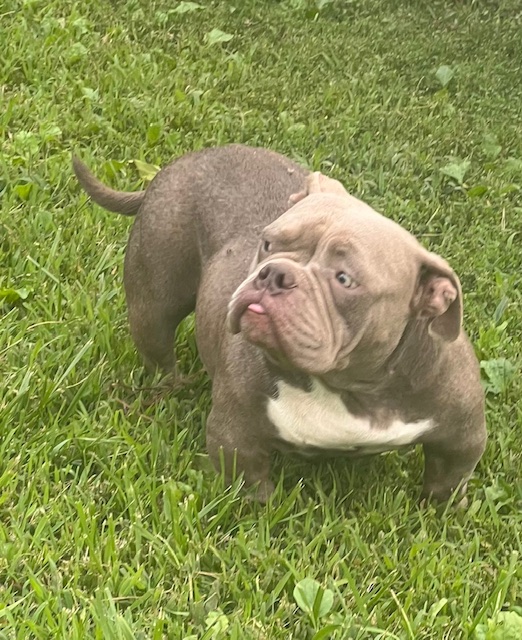
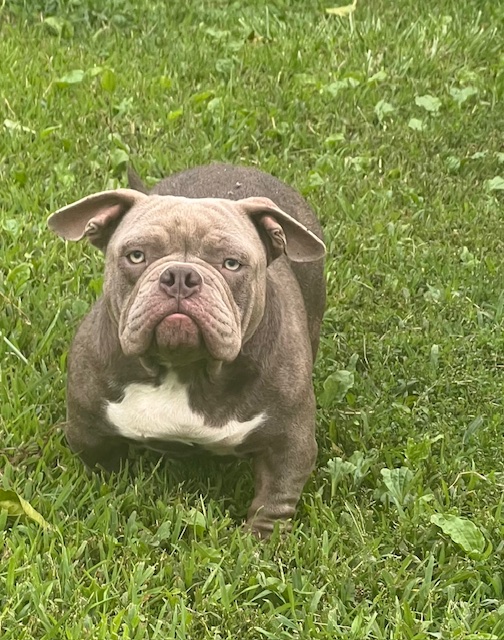
Icon 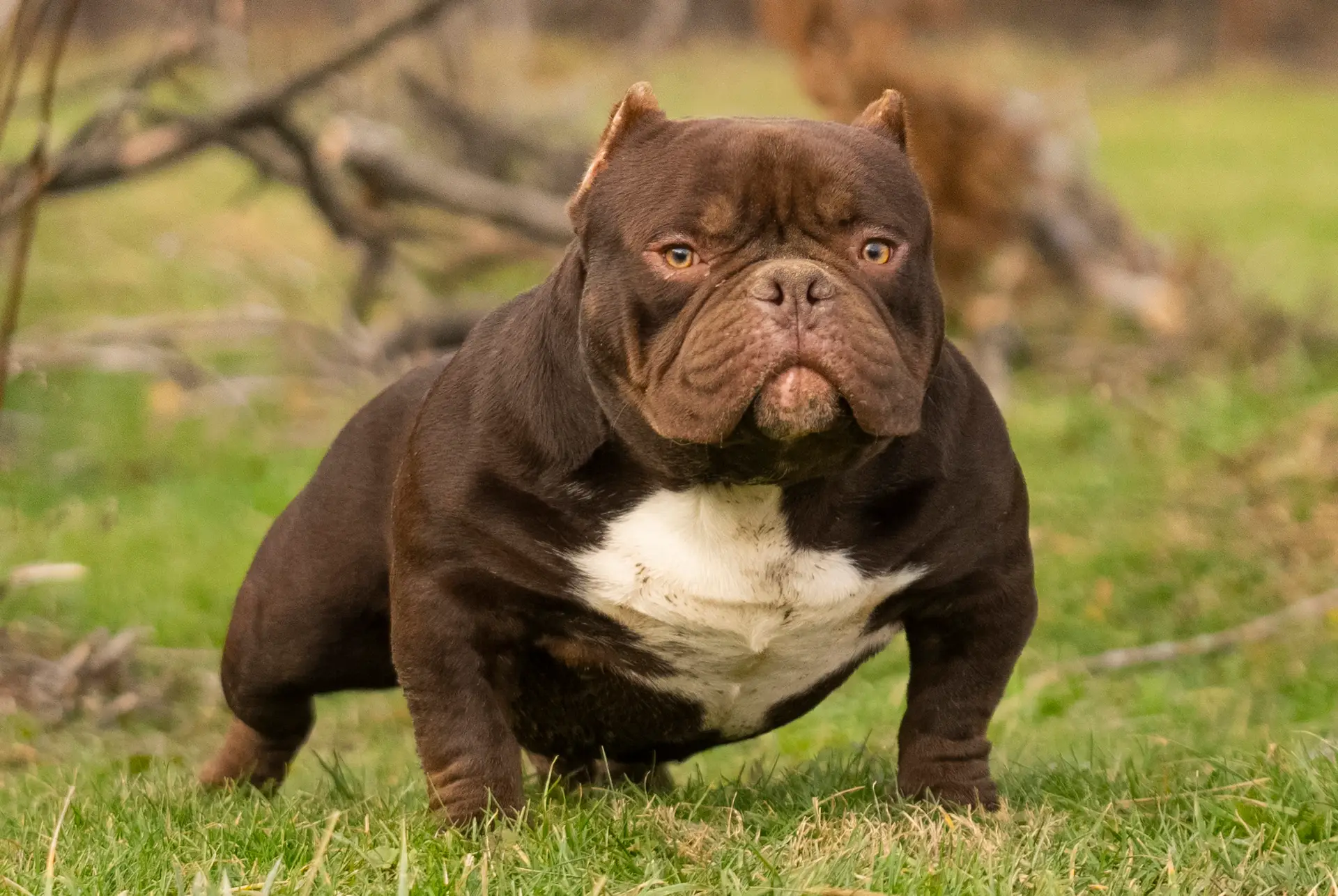 Capcity Bullys | Blue Jay 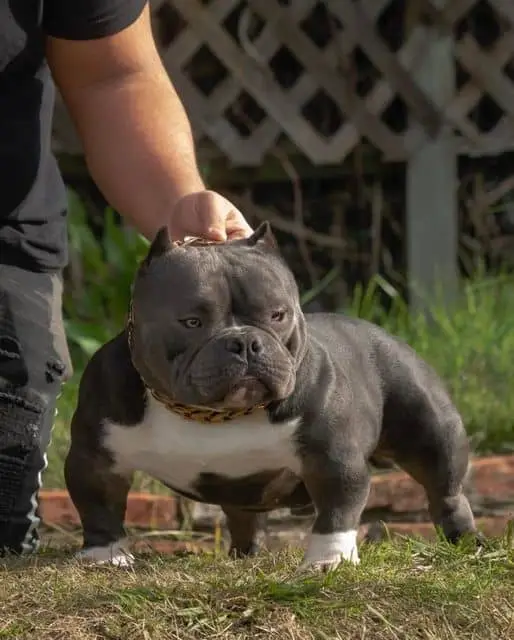 3100 Exotics | Giagi  The Bully Camp Line |
Skittles  3100 Exotics | ||
Goldie 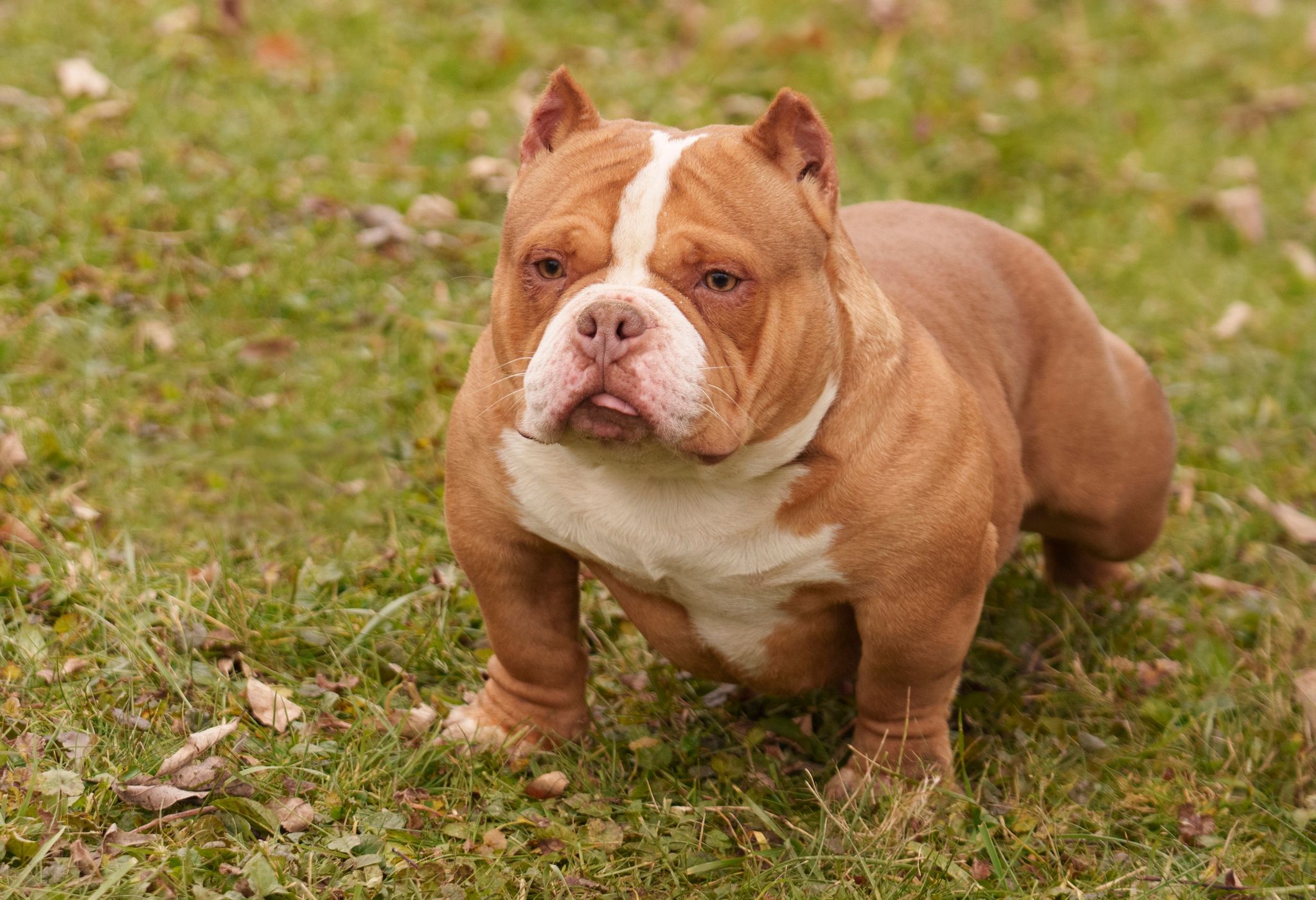 Capcity Bullys | Bullwinkle  Freakline Bulls | |
Tornado  Capcity Bullys | ||
Bella  Capcity Bullys | Devils Paintbrush  GEB | Dirt Devil  GEB |
Cookie  GEB | ||
Missandi  Capcity Bullys | Choco  Capcity Bullys | |
Peaches
Capcity Bullys |
